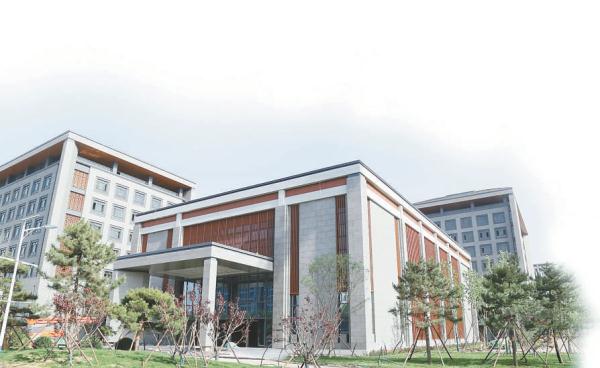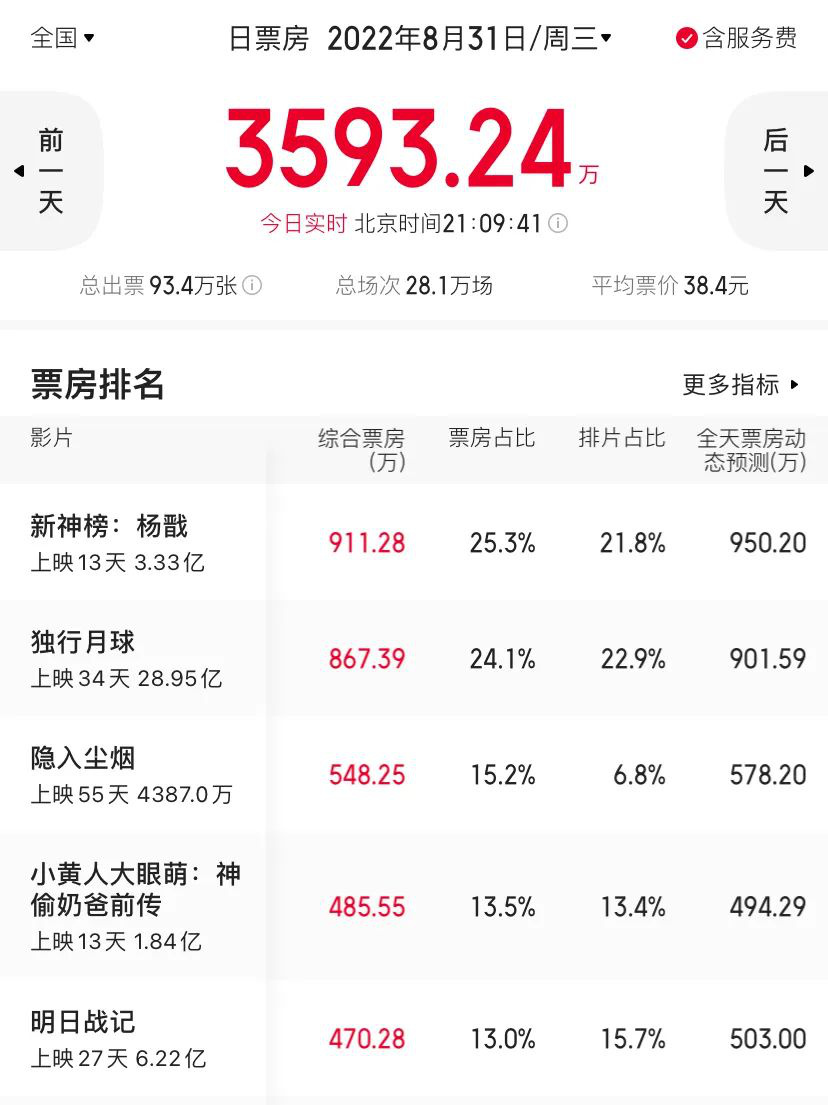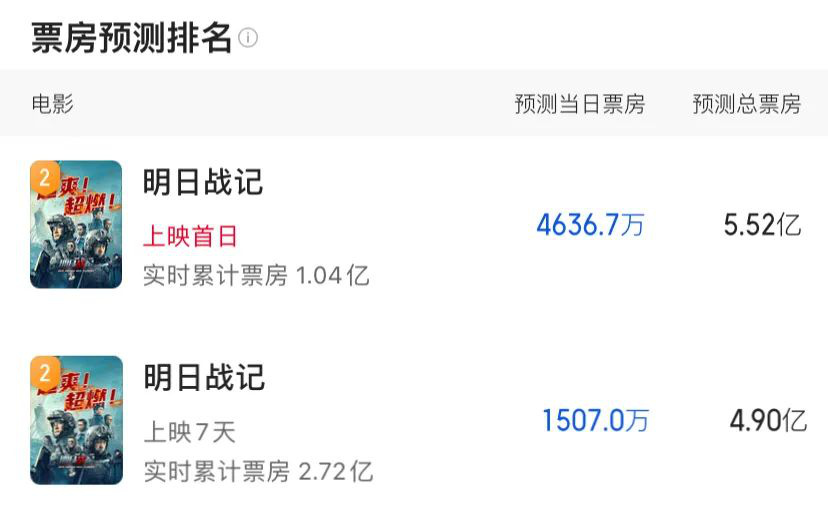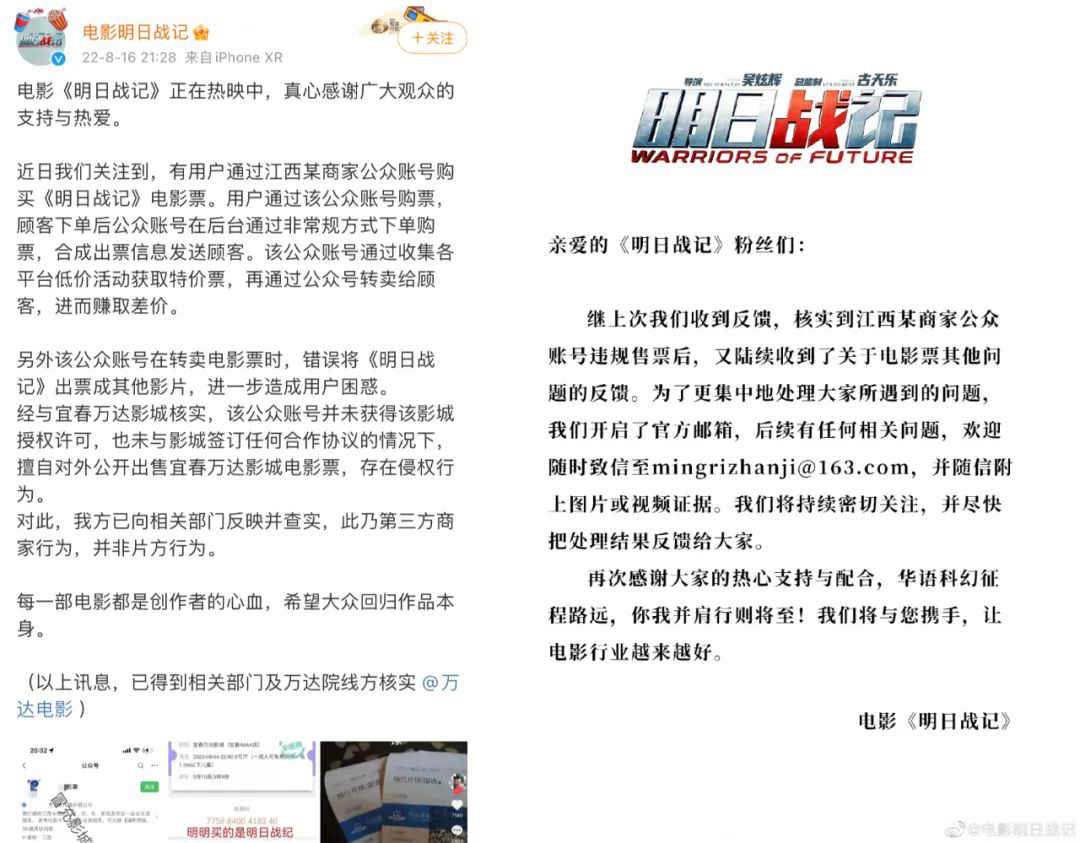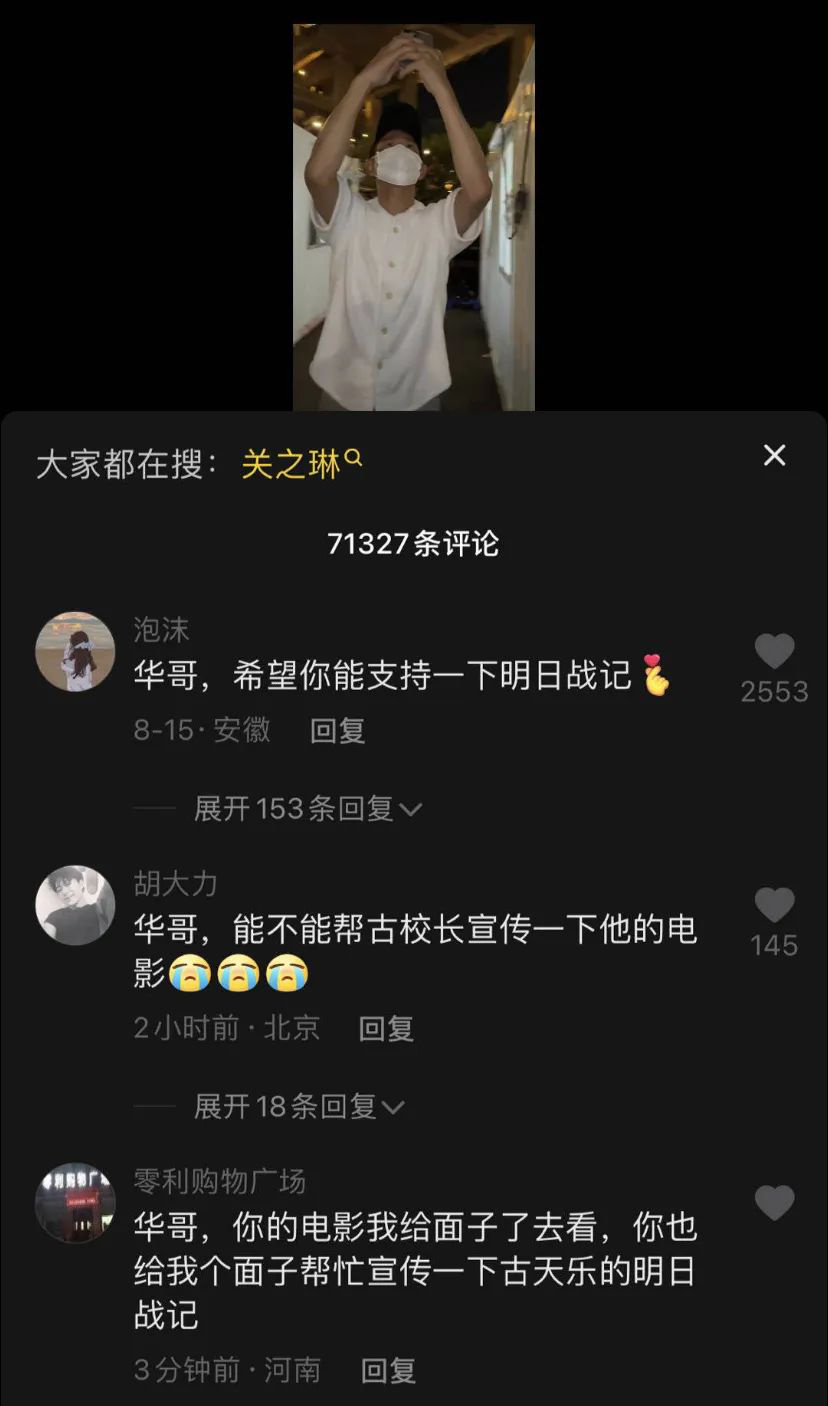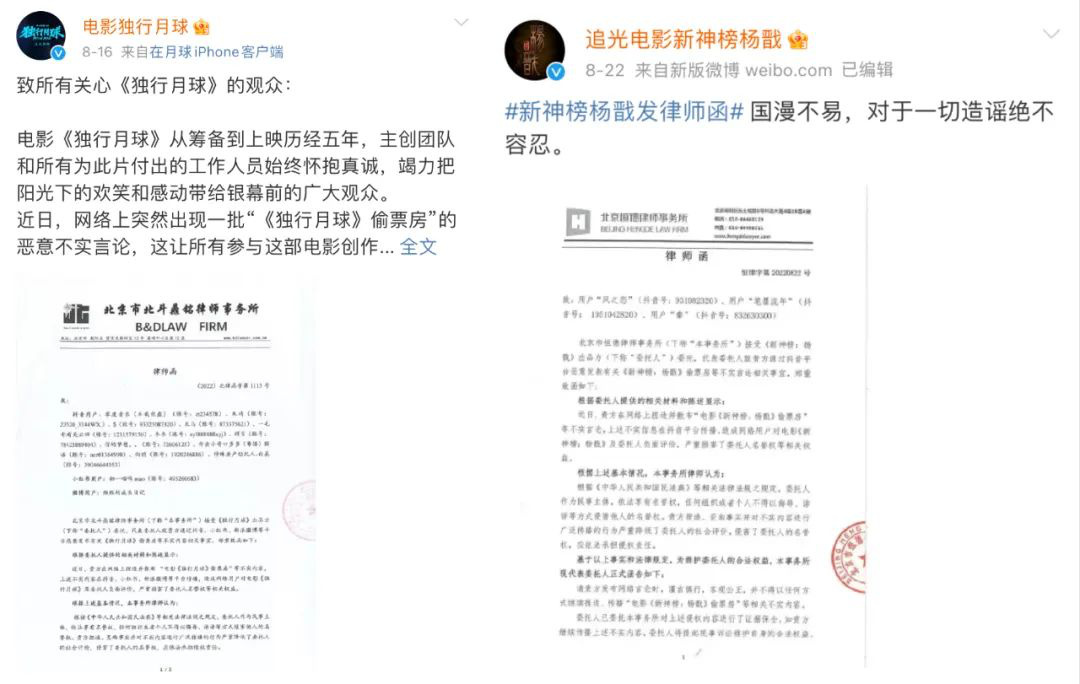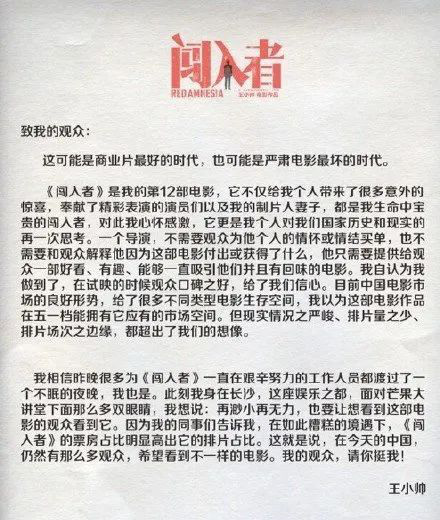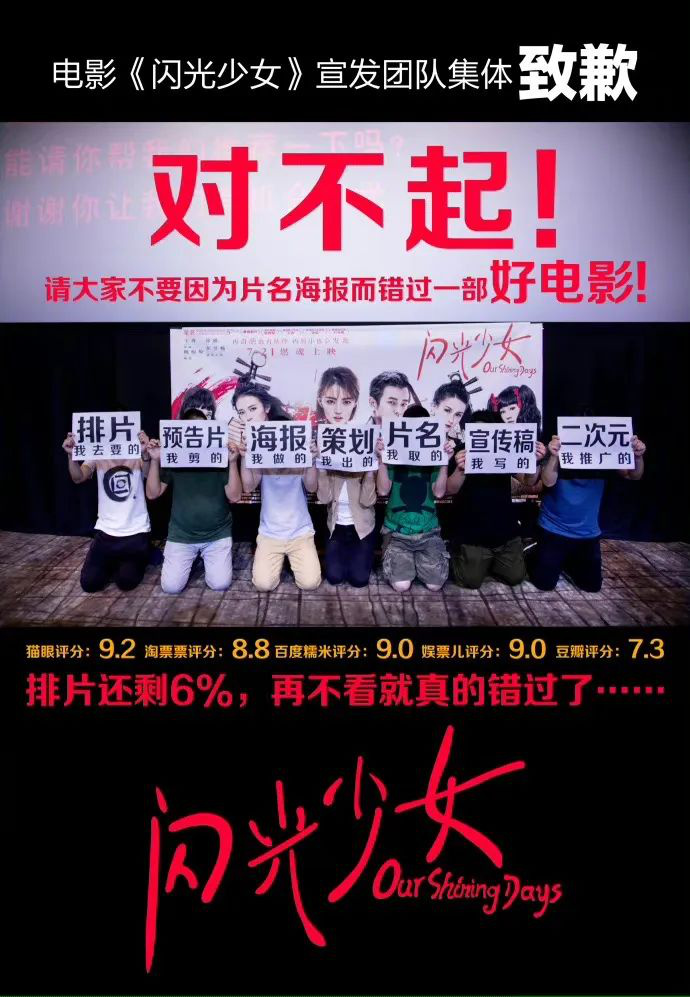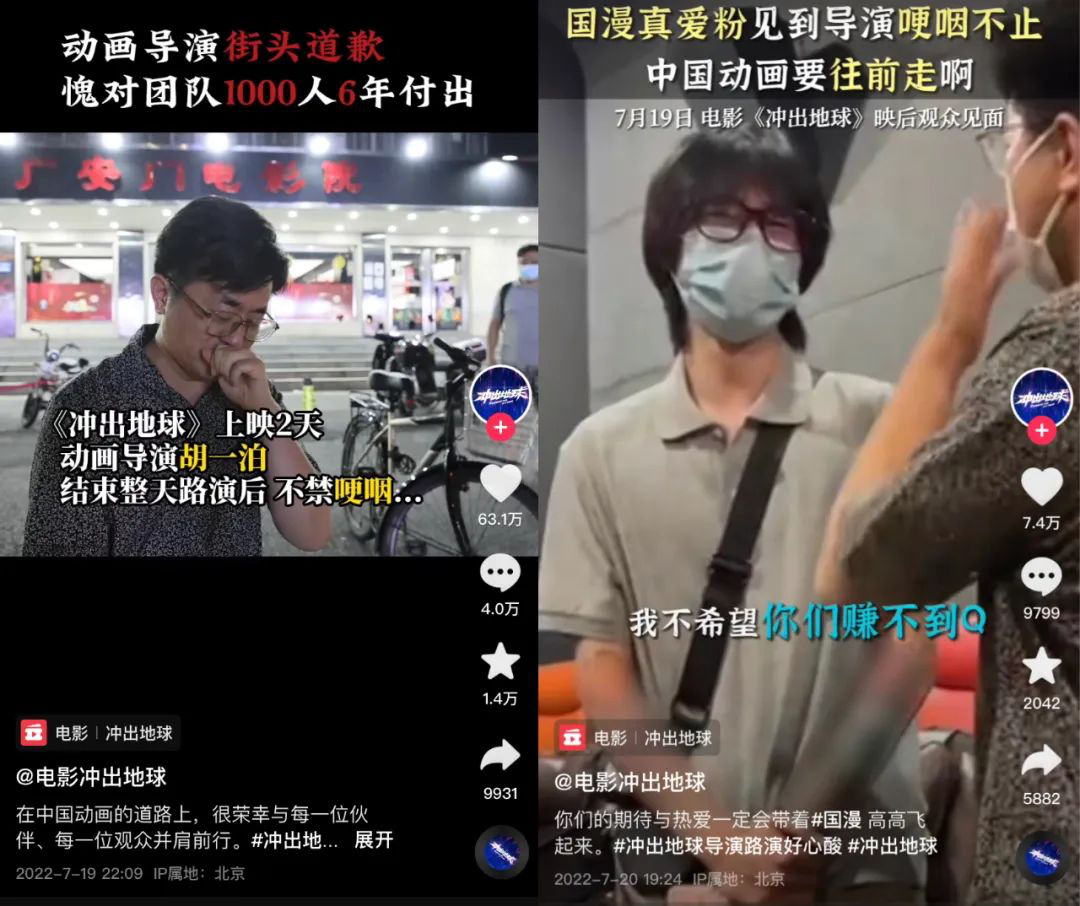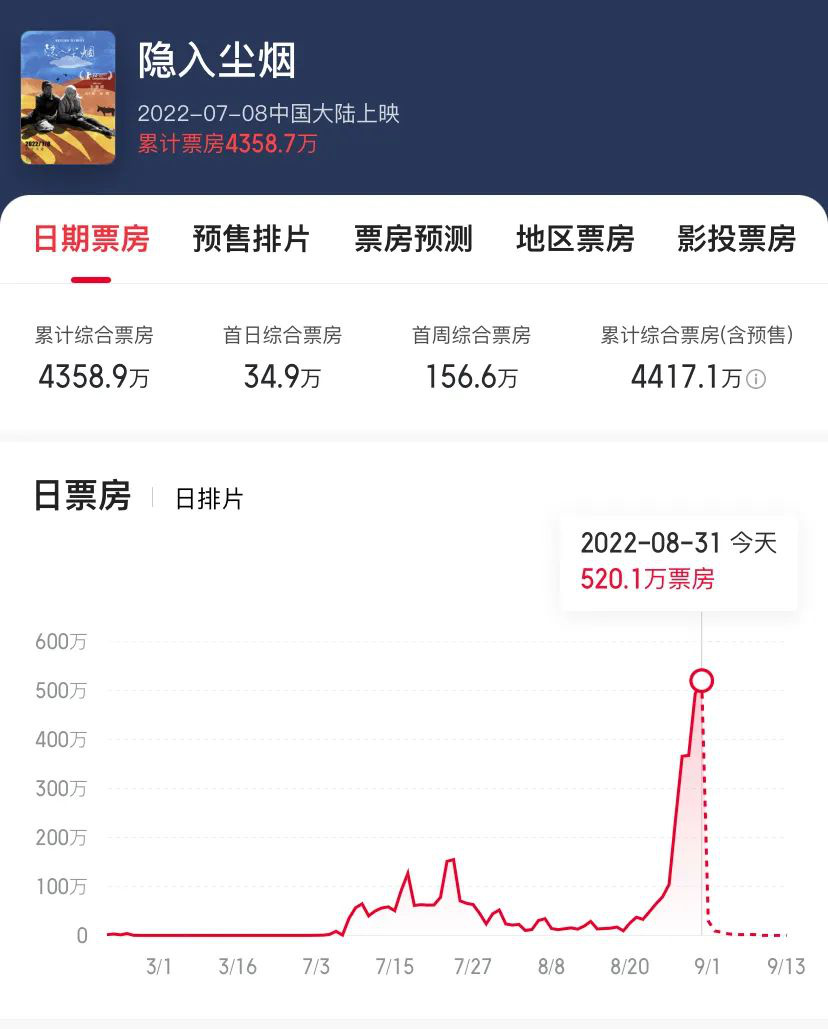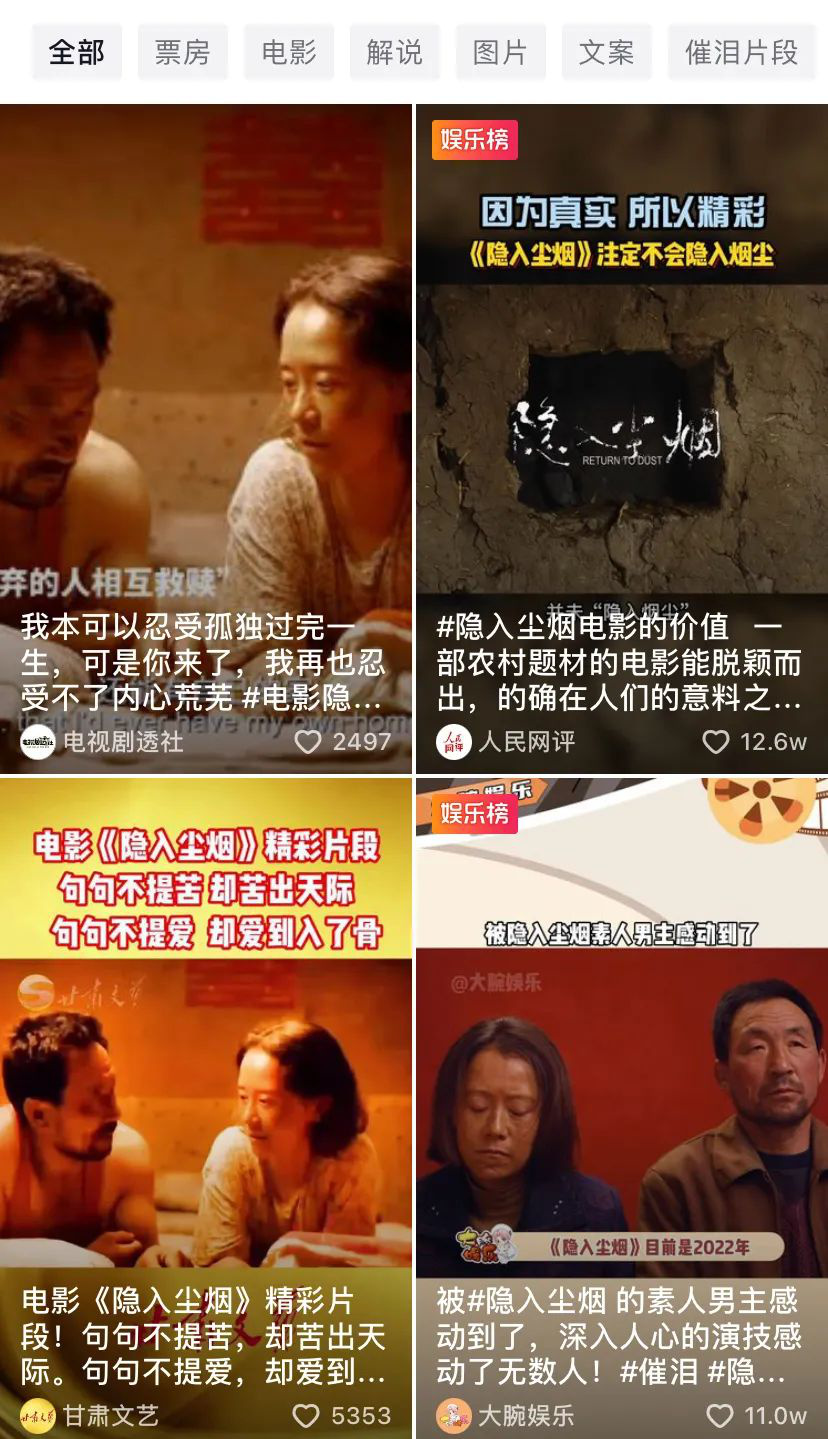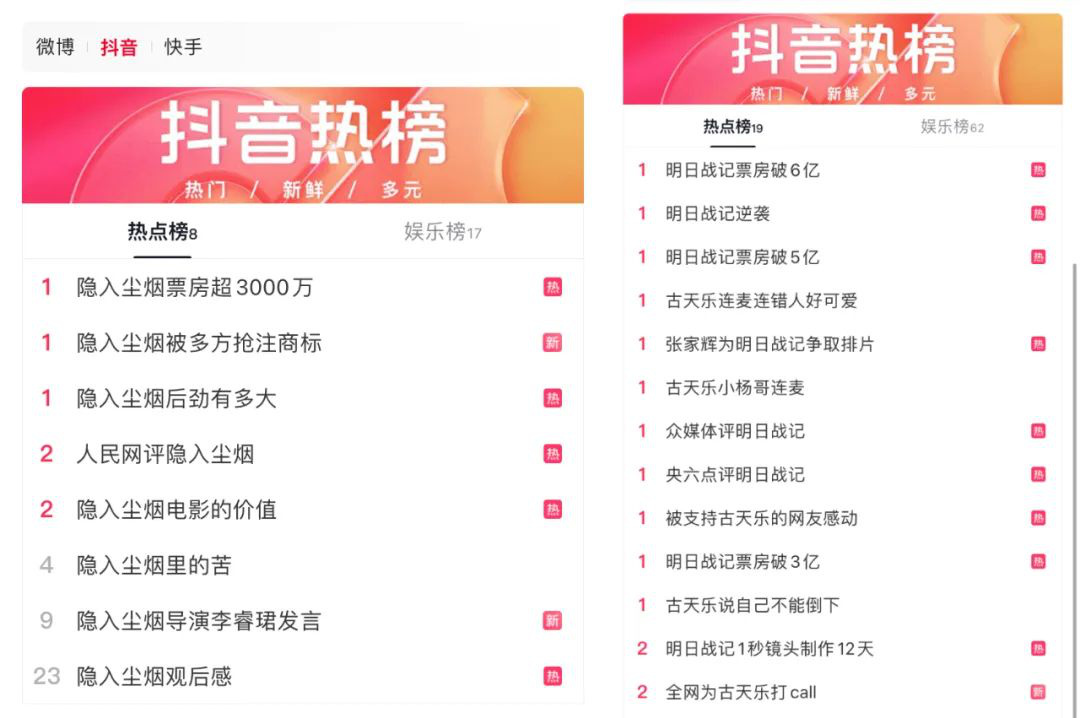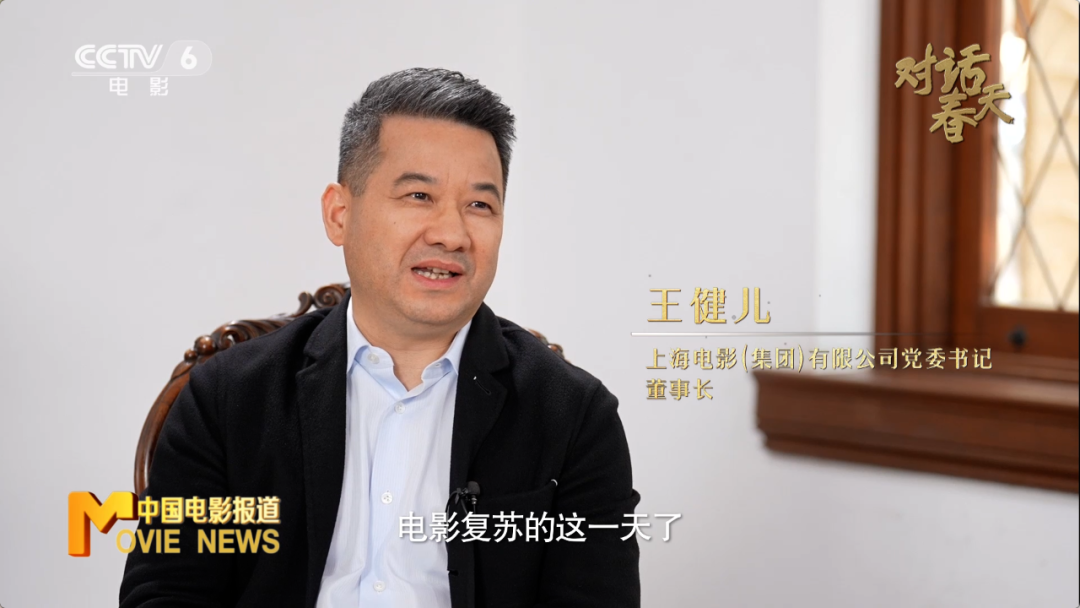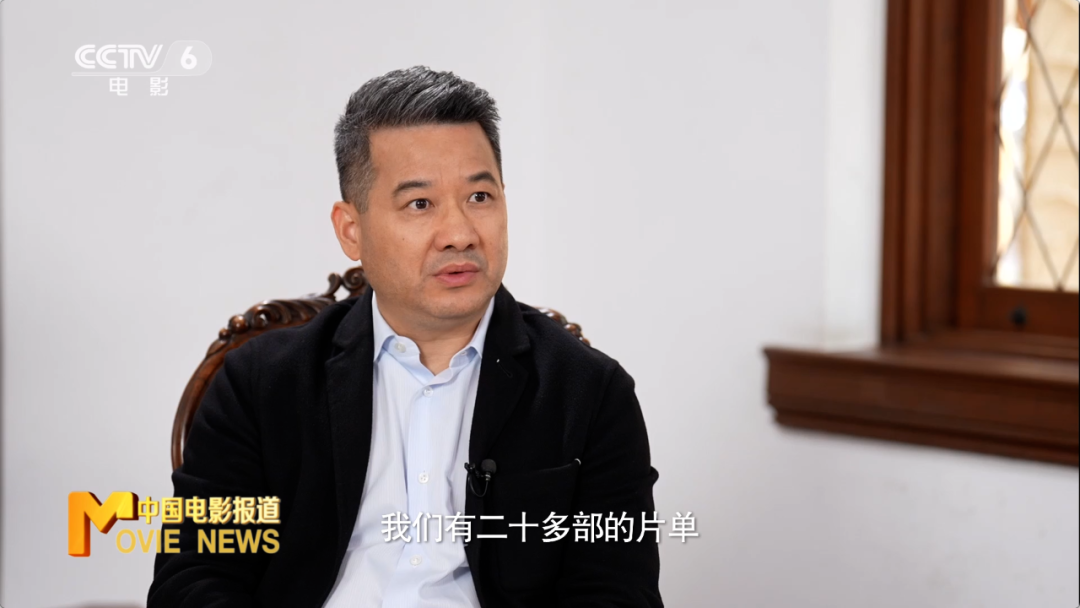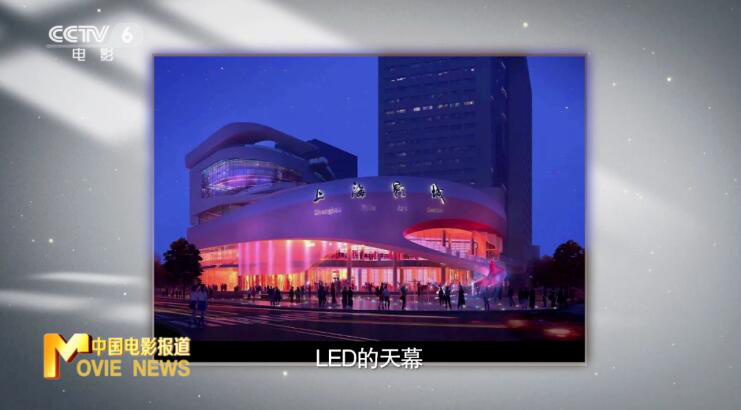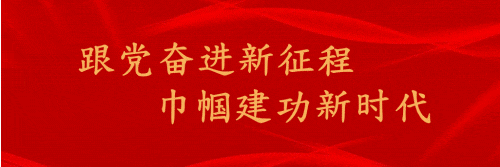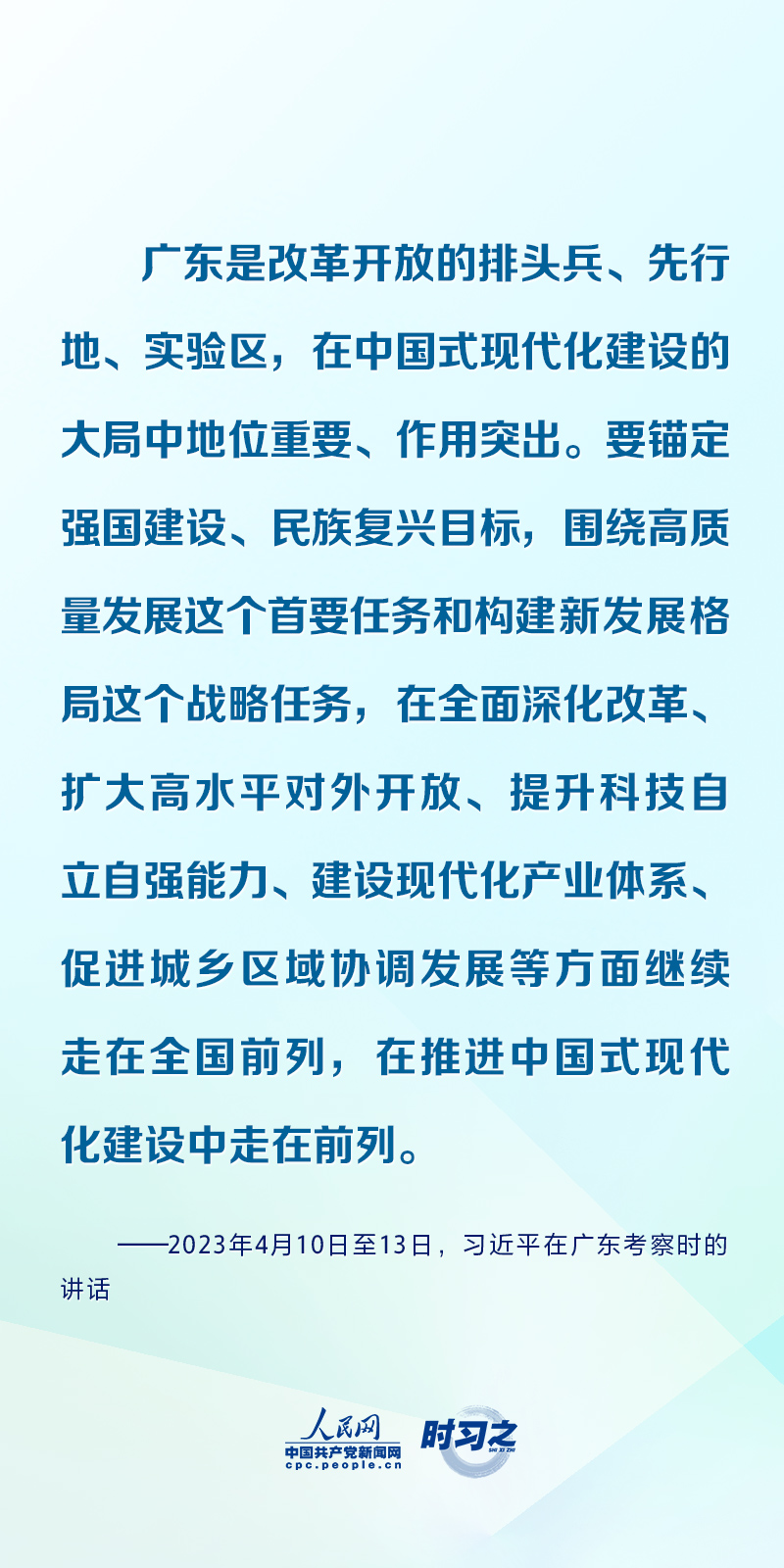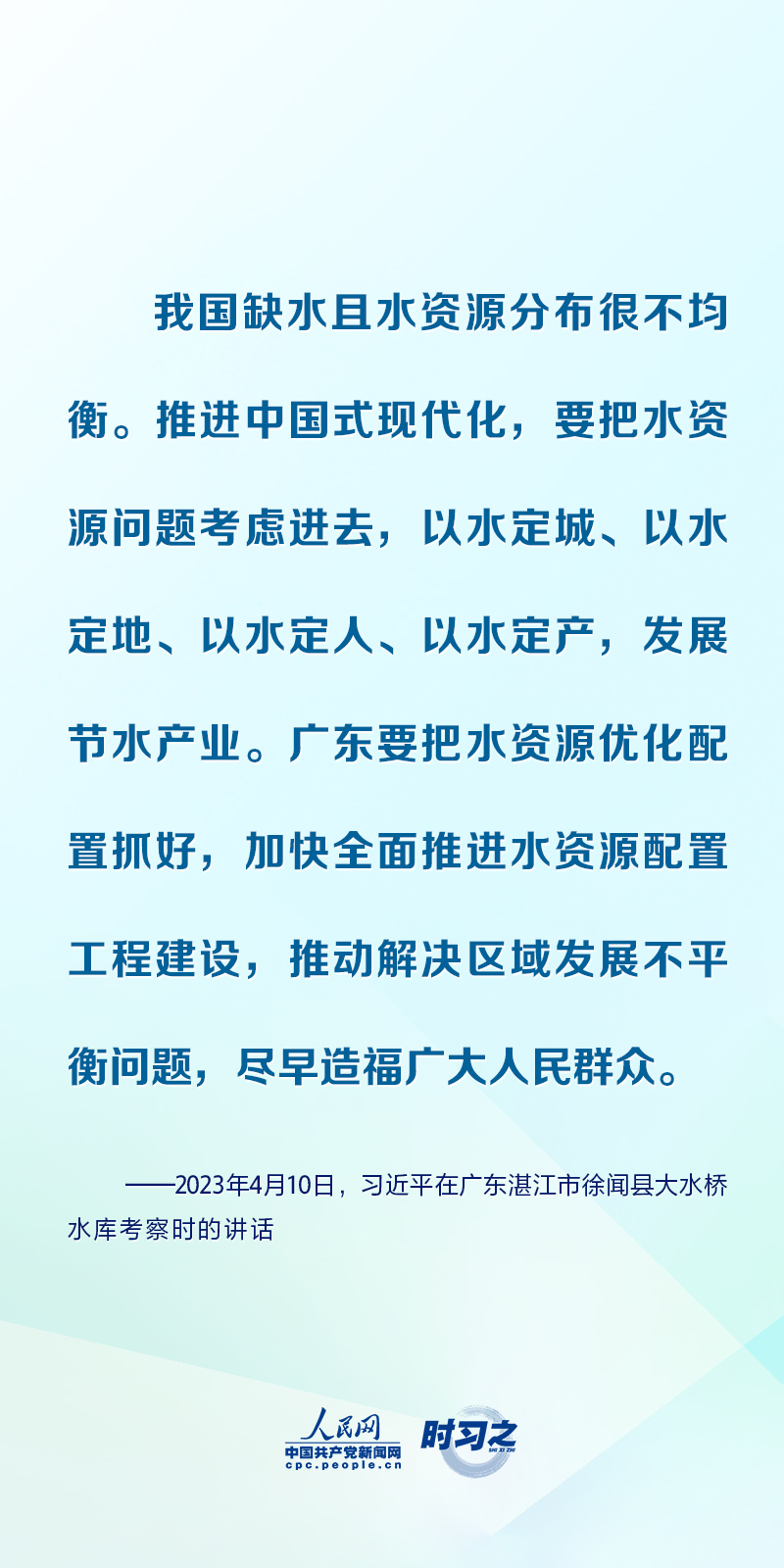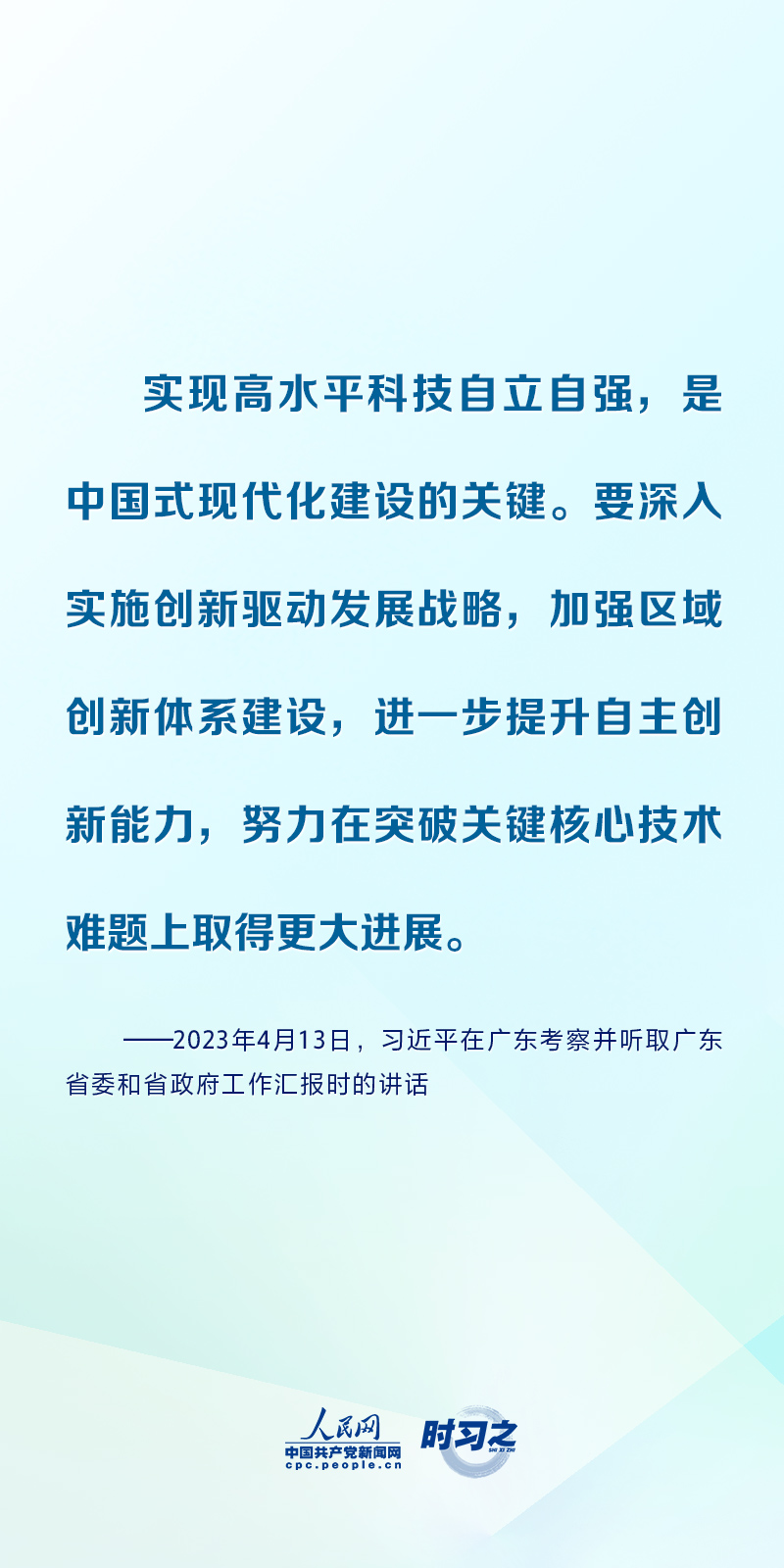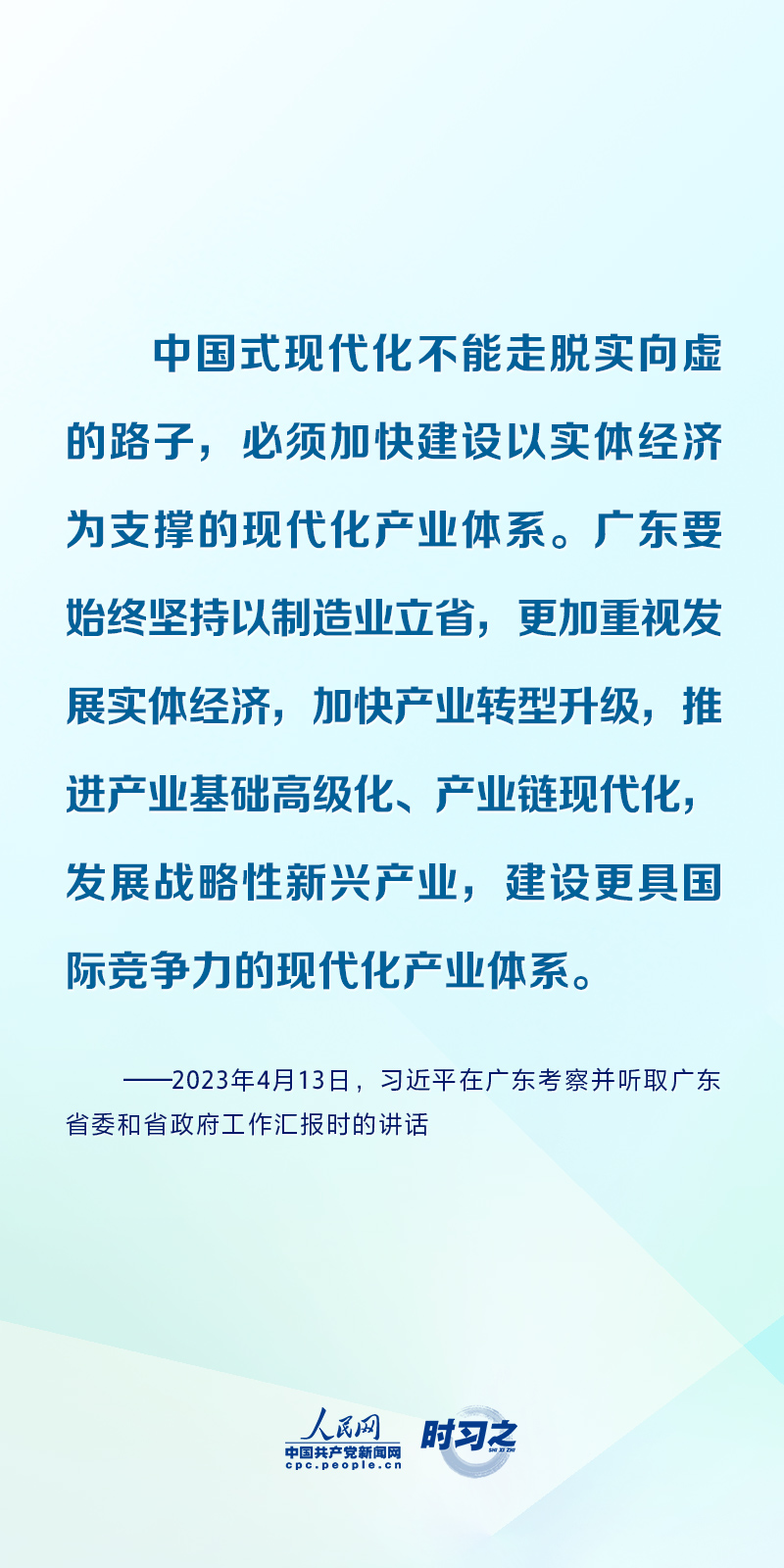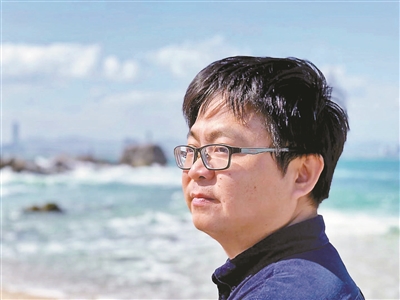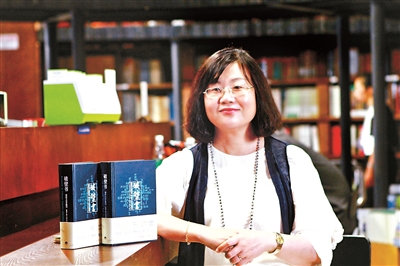Source: Xinhua News Agency
Xinhua News Agency, Beijing, October 8-the Central Committee of the Communist Party of China and the State Council issued the Outline of Ecological Protection and High-quality Development Plan for the Yellow River Basin, and issued a notice requesting all localities and departments to conscientiously implement it in light of the actual situation.
The main contents of the Outline of the Yellow River Basin Ecological Protection and High-quality Development Plan are as follows.
catalogue
foreword
Chapter I Development Background
The first section development process
Section 2 Development Foundation
Section 3 Opportunities and Challenges
Section IV Significance
Chapter II General Requirements
The first section guiding ideology
Section II Main Principles
Section III Strategic Orientation
Section IV Development Goals
Section 5 Strategic Layout
Chapter III Strengthening the Construction of Upstream Water Conservation Capacity
Section 1 Building the "China Water Tower"
Section 2 Protection of Important Water Supply Sites
Section III Strengthening Desertification Control in Key Areas
The fourth quarter to reduce the excessive influence of human activities
Chapter IV Strengthening Soil and Water Conservation in the Middle Reaches
Section 1 vigorously implement forest and grass protection
Section II Strengthening Soil and Water Conservation Capacity
Section III Developing Efficient Dry Farming
Chapter V Promoting Wetland Protection and Ecological Management in the Downstream
Section 1 Protection and Restoration of Wetlands in the Yellow River Delta
Section 2 Construction of Green Ecological Corridor in the Lower Yellow River
Section III Promoting Comprehensive Ecological Improvement in Beach Areas
Chapter VI Strengthening the Economical and Intensive Utilization of Water Resources in the Whole Basin
Section 1 Strengthening the Rigid Constraint of Water Resources
Section 2 scientific allocation of water resources in the whole basin
Section 3: Intensify water saving in agriculture and industry
The fourth quarter to speed up the formation of water-saving lifestyle
Chapter VII Fully Safeguarding the Long-term Stability of the Yellow River
Section 1 Scientific Regulation of the Relationship between Water and Sediment
Section 2 Effectively improve flood control capacity
Section III Strengthening Disaster Response System and Capacity Building
Chapter VIII Strengthening the Systematic Governance of Environmental Pollution
Section 1 Strengthening the Comprehensive Control of Agricultural Non-point Source Pollution
Section II Intensifying the Synergistic Control of Industrial Pollution
Section III Promoting Urban and Rural Domestic Pollution Control as a Whole
The fourth quarter to carry out comprehensive improvement of ecological environment in mining areas
Chapter IX Building a Modern Industrial System with Characteristics and Advantages
Section 1: Enhancing the Supporting Ability of Scientific and Technological Innovation
The second quarter to further improve and strengthen agriculture and animal husbandry
Section III Construction of National Important Energy Bases
Section IV Accelerating the Development of Strategic Emerging Industries and Advanced Manufacturing Industries
Chapter 10 Building a New Pattern of Regional Urban and Rural Development
Section 1 Construction of Urban Agglomeration along the Yellow River with High Quality and High Standard
The second quarter to promote the development of the county according to local conditions
Section III Building an Ecologically Livable beautiful countryside
Chapter XI Strengthening Infrastructure Interconnection
Section 1 Accelerate the construction of new infrastructure
Section 2 Building a Convenient, Intelligent, Green and Safe Comprehensive Transportation Network
Section III Strengthening the Construction of Cross-regional Large Channels
Chapter XII Protection, Inheritance and Promotion of Yellow River Culture
Section 1 Systematic Protection of the Cultural Heritage of the Yellow River
Section II Inheriting Cultural Genes of the Yellow River in depth
The third section tells the story of the Yellow River in the new era
The fourth quarter to create an internationally influential Yellow River cultural tourism belt
Chapter 13 Fill the shortcomings and weaknesses of people’s livelihood
The first section to improve the ability to deal with major public health events
Section 2 Accelerating the Development of Education and Medical Services
Section III Enhancing the Basic Ability of People’s Livelihood Security
The fourth quarter to enhance the development ability of special types of areas
Chapter XIV Accelerating the pace of reform and opening up
Section 1 Improve the Yellow River Basin Management System
Section 2: Improve the value realization mechanism of ecological products
Section III Intensifying Market-oriented Reform
Section IV Deep Integration into Building the Belt and Road Initiative
Section 5 Improve the mechanism of open cooperation among regions
Chapter 15 Promoting the Implementation of Planning
Section 1 Adhere to the centralized and unified leadership of the Party
Section 2 Strengthening the Guarantee of Rule of Law
Section III Strengthening the Ability of Land and Space Governance
The fourth quarter to improve the planning policy system
Section 5 Establish and improve the working mechanism
foreword
Since the 18th National Congress of the Communist Party of China, General Secretary of the Supreme Leader has made many field visits to the ecological protection and economic and social development of the Yellow River Basin, and made important instructions on ecological protection construction in key areas such as Sanjiangyuan, Qilian Mountain, Qinling Mountain and Helan Mountain. General Secretary of the Supreme Leader stressed that ecological protection and high-quality development in the Yellow River Basin are major national strategies. We should jointly do a good job in great protection, jointly promote great governance, focus on strengthening ecological protection and governance, ensure long-term stability of the Yellow River, promote high-quality development in the whole basin, improve people’s lives, protect and inherit the Yellow River culture, and make the Yellow River a happy river for the benefit of the people.
The Yellow River originates from the northern foot of bayan har on the Qinghai-Tibet Plateau, and flows through Qinghai, Sichuan, Gansu, Ningxia, Inner Mongolia, Shanxi, Shaanxi, Henan and Shandong provinces in a zigzag shape, with a total length of 5,464 kilometers, making it the second longest river in China. The Yellow River Basin, which borders Kunlun Mountain in the west, Yinshan Mountain in the north, Qinling Mountain in the south and Bohai Sea in the east, is an important ecological security barrier in China, an important area for population activities and economic development, and plays an important strategic role in the overall situation of national development and socialist modernization.
In order to thoroughly implement the spirit of the important speech and instructions of the Supreme Leader General Secretary, the Outline of Ecological Protection and High-quality Development Planning for the Yellow River Basin was compiled. The planning scope covers the relevant county-level administrative regions in Qinghai, Sichuan, Gansu, Ningxia, Inner Mongolia, Shanxi, Shaanxi, Henan and Shandong provinces, with a land area of about 1.3 million square kilometers and a total population of about 160 million by the end of 2019. In order to maintain the integrity of important ecosystems, the rationality of resource allocation, and the relevance of cultural protection and inheritance, when planning and implementing initiatives in the fields of ecology, economy, culture, etc., we can extend and give consideration to closely related areas according to the actual situation.
This planning outline is a programmatic document guiding the ecological protection and high-quality development of the Yellow River Basin at present and in the future, and it is an important basis for formulating and implementing relevant planning schemes, policies and measures and building related engineering projects. The planning period is 2030, the medium-term outlook is 2035, and the long-term outlook is to the middle of this century.
Chapter I Development Background
The Yellow River is the mother river of the Chinese nation, which has nurtured an ancient and great Chinese civilization. Protecting the Yellow River is a great plan for the great rejuvenation of the Chinese nation.
The first section development process
As early as in ancient times, the Yellow River Basin was an important home for Chinese ancestors to thrive. Chinese civilization has lasted for 5,000 years. For more than 3,000 years, the Yellow River Basin has been the national political, economic and cultural center, and the ancient development level of China, represented by the Yellow River Basin, has long been ahead of the world. The Jiuqu Yellow River flows into the sea, shaping the great character of self-improvement of the Chinese nation with indomitable majestic momentum and becoming an important symbol of the national spirit.
The Yellow River is one of the rivers with the highest sediment content, the most difficult control and serious water damage in the world. Historically, it once burst its banks twice every three years and changed its course once every hundred years. The flood disaster spread as far as Tianjin in the north and Jianghuai in the south. The Yellow River is "good at siltation, determination and migration", which not only shapes the vast North China Plain, but also brings profound disasters to the people along the coast. From Dayu’s flood control to Pan Jixun’s "attacking sand with water", from "blocking the mouth with a scorpion" in the period of Emperor Wu of the Han Dynasty to carving "river affairs and water transport" on the pillars of the court in the period of Emperor Kangxi of the Qing Dynasty, the Chinese nation has always been fighting against the floods and droughts of the Yellow River. However, constrained by the level of productive forces and social system, coupled with man-made destruction such as "replacing soldiers with water", the situation of "repeated treatment and repeated decisions" in the Yellow River has never fundamentally changed, and the long-cherished wish of the people along the Yellow River for a peaceful and happy life has been difficult to realize.
After the founding of New China, in 1952, Comrade Mao Zedong issued a great call to "do a good job in the Yellow River", and the party and the state took this work as a major event in governing and rejuvenating the country. Since the 18th National Congress of the Communist Party of China, the CPC Central Committee with the Supreme Leader as the core has focused on the overall situation of ecological civilization construction, and made clear the idea of "giving priority to water conservation, balancing space, systematically managing and exerting strength with both hands". After generations of hard exploration and unremitting efforts, great achievements have been made in the Yellow River management and the economic and social development of the Yellow River basin, which has achieved a historic change from passive to active, created a historical miracle of the Yellow River in An Lan, and significantly improved the people’s sense of gain, happiness and security, fully demonstrated the advantages of the party’s leadership and socialist system, and wrote a new chapter in the history of the Chinese nation’s management of the Yellow River.
Section 2 Development Foundation
Ecological types are diverse. The Yellow River Basin spans four major geomorphic units, including Qinghai-Tibet Plateau, Inner Mongolia Plateau, Loess Plateau and North China Plain, and three major steps of China’s topography. It has a natural ecological corridor of the Yellow River and several important ecological functional areas, such as Sanjiangyuan, Qilian Mountain and Zoige.
The foundation of agriculture and animal husbandry is good. There are major agricultural products producing areas such as Huanghuaihai Plain, Fenwei Plain and Hetao Irrigation Area, and the grain and meat output accounts for about one third of the country.
Rich in energy resources. Rich in coal, oil, natural gas and non-ferrous metal resources, it is an important energy, chemical, raw materials and basic industrial base in China.
Cultural roots are deep. It has nurtured distinctive regional cultures such as Hehuang culture, Guanzhong culture, Heluo culture and Qilu culture, and its historical and cultural heritage is scattered all over the place.
The ecological environment continues to improve obviously. Through continuous efforts, the Yellow River has achieved remarkable results in water and sediment control, and the flood control and disaster reduction system has been basically completed, ensuring the safety of people’s lives and property, effectively controlling the excessive growth of water consumption in the basin, and realizing the continuous flow of the Yellow River for 20 years. The level of land greening and water conservation capacity have been continuously improved, the protection and restoration of grass and sand in mountains, rivers, fields and lakes have been accelerated, soil erosion control has achieved remarkable results, and the supply capacity of high-quality ecological products has been further enhanced.
The level of development has been continuously improved. The construction of central cities and urban agglomerations has been accelerated, the status of important agricultural and animal husbandry production bases and energy bases in China has been further consolidated, new economic growth points have emerged, and people’s lives have been significantly improved, which has a good foundation for promoting ecological protection and high-quality development at a new historical starting point.
Section 3 Opportunities and Challenges
The CPC Central Committee with the Supreme Leader as the core regards the ecological protection and high-quality development of the Yellow River Basin as a long-term plan related to the great rejuvenation of the Chinese nation. The General Secretary of the Supreme Leader has repeatedly delivered important speeches and made important instructions, which pointed out the direction for the work and provided fundamental follow-up. At present, China’s ecological civilization construction has been promoted in an all-round way, Lucid waters and lush mountains are invaluable assets concept has been deeply rooted in people’s hearts, and the people along the Yellow River have a stronger desire to pursue green mountains, clear water, blue sky and pure land. China’s accelerated green development has brought new opportunities to the Yellow River Basin. In particular, strengthening the construction of ecological civilization and strengthening environmental governance has become an important driving force for high-quality economic development under the new situation. Over the past 40 years of reform and opening up, China’s economic construction has made great achievements, its comprehensive national strength has been significantly enhanced, and its scientific and technological strength has greatly jumped. Socialism with Chinese characteristics’s road confidence, theoretical confidence, institutional confidence and cultural confidence have become more firm, and it has the ability and conditions to solve the Yellow River management problem that has plagued the Chinese nation for thousands of years. Building the "Belt and Road" has developed in depth, the development of the western region has accelerated to form a new pattern, and the Yellow River Basin has broad prospects for two-way opening. The modernization of the national governance system and governance capacity has been significantly accelerated, providing a solid and powerful institutional guarantee for ecological protection and high-quality development in the Yellow River Basin.
The Yellow River has always been "sickly", with poor ecological background, very short of water resources, serious soil erosion and weak carrying capacity of resources and environment, especially the problem of insufficient unbalanced development of provinces along the Yellow River. Comprehensive performance in:
The biggest contradiction in the Yellow River Basin is the shortage of water resources. Most of the upper and middle reaches are located to the west of the 400 mm isoprecipitation line, with dry climate and little rain. The average precipitation for many years is 446 mm, which is only 40% of the Yangtze River basin. The average total water resources for many years is 64.7 billion cubic meters, less than 7% of the Yangtze River. The utilization rate of water resources is as high as 80%, far exceeding the ecological warning line of 40%.
The biggest problem in the Yellow River Basin is ecological fragility. The ecologically fragile areas in the Yellow River Basin are widely distributed and have many types. The plateau glaciers, grassland meadows, the Three Rivers and Qilian Mountains in the upper reaches, the Loess Plateau in the middle reaches and the Yellow River Delta in the lower reaches are all easily degraded, and the restoration is extremely difficult and slow. Environmental pollution is heavy, and the overall water quality is worse than the national average.
The biggest threat in the Yellow River Basin is flood. The relationship between water and sediment is not harmonious, and the old problems such as sediment deposition, river swing and "hanging river on the ground" in the lower reaches have not been completely solved. Nearly one million people in the lower reaches of the beach are still threatened by floods, and the risk of exceeding the standard floods caused by climate change and extreme weather still exists.
The biggest shortcoming of the Yellow River Basin is the insufficient development of high quality. The industries in the provinces along the Yellow River rely heavily on energy, and the problems of low quality and low efficiency are prominent. The characteristics of energy and chemical industry, raw materials, agriculture and animal husbandry are obvious, and there is a lack of emerging industrial clusters with strong competitiveness. The capital outflow of talents supporting high-quality development is serious, and the factor resources are relatively lacking.
The biggest weakness of the Yellow River Basin is the lack of development of people’s livelihood. There are many historical debts in public services, infrastructure and other provinces along the Yellow River. Medical and health facilities are insufficient, the scale, variety and layout of important commodities and materials reserves need to be improved, the ability to ensure market supply and regulate market prices is weak, and the income level of urban and rural residents is lower than the national average.
In addition, restricted by geographical conditions, the economic ties of the provinces along the Yellow River have always been low, the awareness of regional division of labor and cooperation is not strong, the mechanism of efficient and coordinated development is not perfect, the modernization level of river basin governance system and governance capacity is not high, and the protection of cultural heritage system and spiritual connotation are insufficient.
Section IV Significance
It is of far-reaching historical and strategic significance to promote ecological protection and high-quality development in the Yellow River Basin. Protecting the ecological environment of the Yellow River basin and promoting the high-quality economic development along the Yellow River are urgent needs to coordinate the relationship between water and sediment, ease the contradiction between supply and demand of water resources and ensure the An Lan of the Yellow River. It is the practical need to practice Lucid waters and lush mountains are invaluable assets’s concept, prevent and resolve ecological security risks and build a beautiful China. It is a strategic need to strengthen the cooperation of the whole basin, narrow the development gap between the north and the south, and promote the improvement of people’s livelihood; It is an internal need to emancipate the mind, give full play to the role of market mechanism and stimulate the vitality and creativity of market players; It is the need of the times to vigorously protect and carry forward the Yellow River culture, highlight Chinese civilization, enhance national unity and enhance cultural self-confidence.
Chapter II General Requirements
The first section guiding ideology
Guided by the Supreme Leader’s Socialism with Chinese characteristics Thought in the New Era, we will fully implement the spirit of the 19th National Congress of the Communist Party of China and the Second, Third and Fourth Plenary Sessions of the 19th National Congress, strengthen the "four consciousnesses", strengthen the "four self-confidences" and achieve the "two maintenance", adhere to the people-centered development thought, adhere to the general tone of steady progress, adhere to the new development concept, build a new development pattern, and adhere to the supply-side structural reform as the main line. Accurately grasp the strategic requirements of focusing on protection and governance, regard the ecological protection and high-quality development of the Yellow River basin as a long-term plan related to the great rejuvenation of the Chinese nation, make overall plans to promote the comprehensive management, systematic management and source management of grass and sand in landscape forests, fields and lakes, make efforts to ensure the long-term stability of the Yellow River, improve the ecological environment of the Yellow River basin, optimize the allocation of water resources, promote the high-quality development of the whole basin, improve people’s lives, protect, inherit and carry forward the Yellow River culture, and make the Yellow River a happy river for the people.
Section II Main Principles
-Adhere to ecological priority and green development. Firmly establish Lucid waters and lush mountains are invaluable assets’s idea, conform to nature and respect the law, change from excessive intervention and overuse to natural restoration and recuperation, and change the ecological fragility of the Yellow River basin; Optimize the spatial development pattern of land, focus on protecting the ecological environment in ecological functional areas, and do not blindly pursue economic aggregate; Adjust the regional industrial layout and limit economic activities to the tolerable range of resources and environment; Develop emerging industries, promote clean production, and firmly take the road of green and sustainable high-quality development.
-adhere to the principle of measuring water and giving priority to saving water. Taking water resources as the biggest rigid constraint, we should adhere to the principle of determining cities, land, people and production by water, and rationally plan the development of population, cities and industries; Optimize the ecological water use structure for production and life as a whole, deepen the reform of water use system, use market means to force the economical and intensive use of water resources, and promote the transformation of water use mode from extensive and inefficient to economical and intensive.
-adhere to local conditions and classify policies. The natural conditions in different areas of the upper, middle and lower reaches of the Yellow River basin are very different, and the key points of ecological construction are different. It is necessary to improve the pertinence and effectiveness of policies and engineering measures, and promote protection and governance by zoning and classification; Proceeding from the local reality, we should strengthen the grain and energy base, promote the development of characteristic industries according to local conditions, cultivate economic growth poles, build an open channel hub, and drive the high-quality development of the whole basin.
-Adhere to overall planning and coordinated promotion. Based on the integrity of the whole basin and the ecosystem, we will persist in joint efforts to protect and promote great governance, make overall plans for the protection and governance of the upper, middle and lower reaches, tributaries of the main stream and the left and right banks, make overall plans to promote major projects such as dike construction, river regulation, beach management and ecological restoration, and make overall plans for the distribution and utilization of water resources, industrial layout and urban construction. Establish and improve the working mechanism of integration, coordination and linkage, work together to promote the protection and management of the Yellow River in Qi Xin and the provinces along the Yellow River, and keep the lifeline of improving the ecological environment.
Section III Strategic Orientation
An important benchmark for river management. Deeply analyze the root causes of the long-term complex and intractable problems of the Yellow River, accurately grasp the evolution trend of climate change and the laws of floods and other disasters in the Yellow River basin, overcome the one-sidedness of water management, highlight the overall situation, integrity and coordination of the Yellow River management, promote the overall planning and scientific regulation from the source of the Yellow River to the estuary, deepen the basin management system and market-oriented reform, and comprehensively use modern science and technology, rigid engineering measures and flexible storage means to prevent water hazards, break the disadvantages of water, promote the benefits of water and highlight the benefits of water.
An important barrier to national ecological security. Give full play to the comprehensive advantages of the Yellow River basin with ecological barriers such as Qinghai-Tibet Plateau, Loess Plateau, sand control belt in the north and coastal zone of the Yellow River estuary. Starting from promoting the benign and sustainable cycle of the Yellow River ecosystem and enhancing the quality and efficiency of the ecological barriers, follow the principles of natural ecology and use systematic engineering methods to comprehensively improve the water conservation capacity of the "China Water Tower" in the upper reaches, the soil and water conservation level in the middle reaches and the stability of the downstream wetlands, and accelerate the construction of a solid and powerful national ecological security barrier for underdeveloped and ecologically fragile areas.
An important experimental area for high-quality development. Closely combine the comparative advantages and development stages of the Yellow River Basin, optimize and adjust the layout of regional economy and productivity on the premise of ecological protection, and promote the rational division of labor among the upper, middle and lower reaches. By strengthening ecological construction and environmental protection, consolidate the foundation of high-quality development in the basin; By consolidating food and energy security, highlight the characteristics of high-quality development in the basin; Enhance the high-quality development momentum of the basin by cultivating important economic growth poles; Through the two-way opening of inland and coastal areas, the high-quality development vitality of the basin will be enhanced, which will provide a path for the transformation of old and new kinetic energy in the basin economy and underdeveloped areas and provide support for the high-quality development of the national economy.
An important bearing area for the protection, inheritance and promotion of Chinese culture. Relying on the advantages of rich cultural heritage resources and deep roots of traditional culture in the Yellow River Basin, we should protect, inherit and carry forward the Yellow River culture from a strategic height, and dig deep into its philosophical thoughts, humanistic spirit, values and moral norms. Through the creative transformation and innovative development of the Yellow River culture, the unique charm of Chinese excellent traditional culture, the rich connotation of revolutionary culture and the value of the times of advanced socialist culture will be fully displayed, the cultural soft power and influence of the Yellow River basin will be enhanced, and a spiritual home with deep feelings of home and country, moral concepts and common roots of all ethnic groups will be built.
Section IV Development Goals
By 2030, the relationship between people and water in the Yellow River Basin will be further improved, the level of basin governance will be significantly improved, the pattern of ecological co-governance, environmental co-protection and coordinated development between urban and rural areas will be gradually formed, the modern flood control and disaster reduction system will be basically completed, the water resources guarantee capacity will be further improved, the ecological environment quality will be significantly improved, the status of the national grain and energy base will continue to be consolidated, the power system dominated by urban agglomerations will be stronger, the rural revitalization will achieve remarkable results, the cultural influence of the Yellow River will be significantly expanded, the level of basic public services will be significantly improved, and the people
By 2035, great strategic achievements will be made in the ecological protection and high-quality development of the Yellow River Basin, the ecological environment of the Yellow River Basin will be improved in an all-round way, the ecosystem will be healthy and stable, the level of water resources conservation and intensive utilization will lead the country, the modern economic system will be basically completed, the Yellow River culture will be greatly developed and prospered, and people’s living standards will be significantly improved. By the middle of this century, the level of material civilization, political civilization, spiritual civilization, social civilization and ecological civilization in the Yellow River Basin has been greatly improved, which has played an important supporting role in building China into a prosperous, strong, democratic, civilized, harmonious and beautiful socialist modernization power.
Section 5 Strategic Layout
Construct the spatial layout of "one belt, five areas and multiple points" for ecological protection in the Yellow River Basin. "Belt" refers to the ecological belt along the Yellow River with the main stream of the Yellow River and major rivers and lakes as the skeleton, connecting the Qinghai-Tibet Plateau, the Loess Plateau, the northern sand control belt and the coastal zone of the Yellow River estuary. "Five areas" refers to water conservation areas with key ecological functional areas such as Sanjiangyuan, Qinling Mountains, Qilian Mountains, Liupanshan Mountain and Zoige, desertification control areas with southern edge of Inner Mongolia Plateau and central Ningxia as the main areas, soil and water conservation areas with loess plateaus in eastern Qinghai, eastern Gansu, northern Shaanxi, northwestern Shanxi and southern Ningxia as the main areas, and Weihe River, Fenhe River, Sushui River and Wuliangsuhai. "Duodian" refers to the habitats of important wild animals such as Tibetan antelope, snow leopard, wild yak, indigenous fish and birds and the distribution areas of rare plants.
Construct a dynamic development pattern of "one axis, two regions and five poles" in the Yellow River basin, and promote the rational flow and efficient agglomeration of factors between regions. "One axis" refers to a modern economic corridor that relies on the international corridor of the new Eurasian Continental Bridge, connects the upper, middle and lower reaches and new urban agglomerations in series, takes advanced manufacturing as the leading factor, and takes innovation as the main kinetic energy. It is the main body of the Yellow River Basin participating in the national and international economic division of labor. "Two areas" refers to the main grain producing areas with Huang-Huai-Hai Plain, Fenwei Plain and Hetao Plain as the main carriers and the energy-rich areas with Shanxi and Ordos Basin as the main carriers, so as to accelerate the modernization of agriculture and energy. The "five poles" refer to the Shandong Peninsula urban agglomeration, the Central Plains urban agglomeration, the Guanzhong Plain urban agglomeration, the Yellow River zigzag urban agglomeration and the Lanzhou-Xining urban agglomeration, and are the main carriers of the growth pole of regional economic development and the distribution of population and productivity in the Yellow River basin.
Construct a diverse, harmonious and compatible Yellow River culture display area. Hehuang-Tibetan-Qiang cultural area, mainly including the upper reaches of Datong River and Huangshui River basin and Gannan, Zoige, Hongyuan and Shiqu areas, is a transitional zone where farming culture and nomadic culture meet and blend, with distinctive national cultural characteristics. Guanzhong Cultural District mainly includes the Weihe River Basin in the middle reaches and the Loess Plateau areas in Shaanxi and Gansu. The Guanzhong area, represented by Xi ‘an, is rich in traditional culture and historical and cultural heritage. The Heluo-Sanjin Cultural Zone, which mainly includes the middle reaches of the Yiluo River and Fenhe River, is an important birthplace of the Chinese nation with a large number of cultural relics. Confucian cultural areas, mainly including Qufu, Tai ‘an and other downstream areas in Shandong, have a long history of traditional culture represented by Confucius and Mencius. The red cultural area, mainly including the revolutionary base areas such as Shaanxi-Gansu-Ningxia, the Red Army’s Long March Snow Mountain Grassland and the Western Expedition Route of the West Route Army, is one of the areas with the largest scale and the largest number of revolutionary sites in China.
Chapter III Strengthening the Construction of Upstream Water Conservation Capacity
Follow the laws of nature, focus on key areas, accelerate the containment of ecological degradation through natural restoration and implementation of major ecological protection and restoration projects, restore important ecosystems, and strengthen the function of water conservation.
Section 1 Building the "China Water Tower"
The upstream Sanjiangyuan region is a veritable "Chinese water tower". From the perspective of systematic engineering and overall situation, we should take overall measures and take multiple measures to comprehensively protect the ecological elements of mountains, rivers, forests, lakes, grasses and sands in the Sanjiangyuan region, restore biodiversity and realize a virtuous cycle of ecological development. Strengthen measures such as grazing prohibition and enclosure, scientifically classify and promote replanting improvement, control and prevention of rats, pests and poisonous weeds according to grassland types and degradation reasons, and implement comprehensive management of degraded grasslands such as black soil beaches to effectively protect and restore important ecosystems such as alpine meadows and grasslands. Strengthen the protection of rivers and lakes such as Zhaling Lake, Eling Lake, Yuegu Zongliequ and Maduo River Lake Group, maintain the natural state, strictly control the coastline of river sections flowing through towns, completely ban mining, sand mining, fishing and hunting activities around rivers and lakes, and scientifically determine the scale of tourism. Systematically sort out the distribution of plateau wetlands, implement closed protection for moderately and above degraded areas, restore the ecological function of degraded wetlands and surrounding vegetation, and curb the shrinking trend of swamp wetlands. We will continue to study and evaluate the impact of climate change on glaciers and plateau permafrost, and establish an ecosystem trend change monitoring and risk early warning system. Improve the wildlife protection and monitoring network, expand and improve species habitats, implement rare and endangered wildlife protection and breeding actions, strengthen the proliferation and release of endangered fish, establish a plateau biological germplasm resource bank, establish and improve biodiversity observation networks, and maintain biodiversity in alpine plateau areas. Build Sanjiangyuan National Park.
Section 2 Protection of Important Water Supply Sites
The upper reaches of Yushu and Guoluo in Qinghai, Aba and Ganzi in Sichuan, Gannan in Gansu and other areas are rich in river and lake wetland resources, which are the main recharge areas of the Yellow River. Strictly protect the ecological space of important wetlands such as internationally important wetlands, national important wetlands and national wetland nature reserves, intensify the management and restoration of major wetlands such as Gannan and Zoige, and promote enclosure afforestation and natural vegetation restoration as a whole on the basis of improving the quality of existing forest resources to expand the effective coverage rate of forest vegetation. We will comprehensively evaluate the carrying capacity of resources and environment of grasslands in the upper reaches, promote livestock, grazing and tillage by grass, intensify the implementation of projects such as returning farmland to forests and grasslands, returning grazing to grasslands, and preventing and controlling grassland pests, actively carry out grass seed improvement, and scientifically control degraded grasslands in Maqu, Luqu, Hongyuan and Zoige. We will carry out ecological restoration projects in the source area of Weihe River and other key tributaries, carry out rotation fallow and grassland rotation in Huangshui River and Taohe River basins, vigorously develop organic agriculture, and return cultivated grassland to grassland. Promote the construction of Zoige National Park across Sichuan and Gansu provinces, and build an important wetland ecosystem and biological habitat in high altitude areas around the world.
Section III Strengthening Desertification Control in Key Areas
Insist on relying on and mobilizing the masses, popularize the sand control experience of Kubuqi, Maowusu and Babushan Forest Farm, carry out large-scale sand control, innovate the desert control model, and build a sand control belt in the north. Set up desertification land enclosure protection areas in suitable areas to scientifically fix and prevent desertification. We will continue to promote the construction of desert shelter forest system, carry out in-depth major projects such as returning farmland to forests, returning grazing to grassland, shelterbelts in the Three North Areas, and saline-alkali land control, carry out pilot projects for photovoltaic sand control, and build a shelter forest system combining arbor, shrub and grass according to local conditions. Give full play to the ecological barrier of the main stream of the Yellow River and the sand-blocking function of Qilian Mountain, Liupan Mountain, Helan Mountain and Yinshan Mountain, implement the project of locking the frontier defense wind and fixing sand, strengthen the construction of ecological barrier in the marginal areas of main sand, and vigorously control the mobile sand dunes. Promote the comprehensive control of soil erosion in the crisscross areas of water erosion, wind erosion and agriculture and animal husbandry in the upper reaches of the Loess Plateau. Actively develop advanced technologies and industries for desertification control and expand international exchanges and cooperation in desertification control.
The fourth quarter to reduce the excessive influence of human activities
Correctly handle the relationship between production and life and ecological environment, and strive to reduce the impact and destruction of human activities such as overgrazing, excessive resource development and utilization, and excessive tourism on the ecosystem. Alpine meadows, grasslands, wetlands and forest ecosystems with important ecological functions will be included in the red line control scope of ecological protection, and protection and use control measures will be strengthened. Take the way of setting up public welfare posts for ecological management and protection and developing new skills training to guide residents in protected areas to change jobs. We will carry out livestock reduction actions in overloaded and overgrazing areas, and study and formulate subsidy policies for livestock reduction in plateau pastoral areas. Strengthen the construction of artificial pasture, control the scale of free-range grazing, increase support for house feeding and captive breeding, and reduce the intensity of grassland utilization. Consolidate the achievements of nomads’ settlement project, and guide nomads to adjust their production and lifestyle by means of forbidding grazing, rotational grazing and developing ecology, leisure and sightseeing animal husbandry.
Chapter IV Strengthening Soil and Water Conservation in the Middle Reaches
Focus on soil and water conservation in the Loess Plateau, comprehensively protect natural forests, continuously consolidate the achievements of returning farmland to forests and grasslands, increase the comprehensive control of soil erosion, steadily improve the level of urbanization, and improve the ecological outlook of the middle reaches.
Section 1 vigorously implement forest and grass protection
Follow the distribution law of vegetation zones in the Loess Plateau, pay close attention to the trend of climate warming and humidification and its influence, and take reasonable ecological protection and restoration measures. Forest vegetation belt is mainly composed of arbor forest and mixed forest of arbor, shrub and grass, forest and grassland vegetation belt is mainly composed of shrub forest, and grassland vegetation belt is mainly composed of grass planting and grassland improvement. Strengthen the demonstration of water balance, and take various measures to promote forest vegetation construction according to local conditions, such as closing hillsides for afforestation, artificial afforestation and aerial seeding afforestation. Ecological protection and restoration projects of landscape, forest, field, lake and grass will be implemented in key areas such as Hetao Plain, Fenwei Plain, land desertification area of Loess Plateau and shrinking and degraded area of lakes in Inner Mongolia Plateau. Strengthen the protection of water conservation forest construction areas by closing hillsides for grazing prohibition, rotational grazing and enclosure, and promote natural restoration. According to the landform, soil, climate and technical conditions, scientifically select artificial afforestation tree species, improve the survival rate, improve the forest structure and improve the forest quality. Afforestation by aerial seeding shall be carried out in suitable areas in remote mountainous areas, sandstorm areas and tributaries. Moderately develop economic forests and undergrowth economies, and improve ecological benefits and farmers’ income. Strengthen the protection and restoration of ecological environment in Qinling Mountains, strengthen the protection and restoration of habitats of rare and endangered species such as giant pandas, golden monkeys and crested ibis, actively promote the construction of ecological corridors, and expand the living space of wildlife.
Section II Strengthening Soil and Water Conservation Capacity
Focusing on reducing the sediment entering the river, we will actively promote key projects of soil and water conservation, such as plateau protection, comprehensive management of small watersheds, construction of warping dams, and comprehensive management of sloping farmland. Actively promote the construction of coarse sediment interception and sediment reduction facilities in the hilly and gully areas of Shanxi, Shaanxi and Mongolia. Focusing on Dongzhi tableland in Longdong, Taide tableland in Shanxi, Luochuan tableland in northern Shaanxi and Weibei tableland in Guanzhong, the loess plateau gully-fixing and tableland protection project will be implemented. Focusing on the hilly and gully areas of Qingshan Mountain in Shanxi, Gansu and Jinning, we will carry out the construction of dry terraces, strengthen the collection and utilization of rainwater, and promote the comprehensive management of small watersheds. Strengthen the normative guidance for the construction of warping dams, popularize new standards, new technologies and new processes, and vigorously build high-standard warping dams in areas with serious gravity erosion and severe soil erosion. Investigate the hidden dangers of existing warping dams, strengthen the reinforcement of dangerous warping dams and upgrade and transform old warping dams, and improve management and protection capabilities. Establish a cross-regional warping dam information monitoring mechanism to realize dynamic monitoring and safety risk early warning of important warping dams.
Section III Developing Efficient Dry Farming
Focus on changing the traditional production mode of agriculture and animal husbandry, upgrading agricultural infrastructure, popularizing water storage and water conservation technology, and coordinate soil and water conservation and the development of efficient dry farming. Optimize the development of herbivorous animal husbandry, grass industry and high value-added planting, and actively promote the application of new technologies and models of dry farming. Support semi-house-feeding breeding, rationally develop artificial grass planting, and build artificial forage base in areas with suitable conditions. Select the best varieties for dry farming and adjust the planting structure for dry farming according to local conditions. Adhere to the combination of land use and land cultivation, continue to promote the system of farmland rotation and fallow, and rationally rotate crops. Actively carry out farmland remediation and soil organic fertilization improvement, and strengthen the construction of field rainwater collection facilities. We will renovate sloping farmland, transform old terraces and build a number of dry terraces in suitable areas. Vigorously promote agricultural water storage and conservation technology, promote integrated demonstration of technology and equipment, and further increase support for the construction of dry farming demonstration bases.
Chapter V Promoting Wetland Protection and Ecological Management in the Downstream
Build a green ecological corridor in the lower reaches of the Yellow River, strengthen the protection and restoration of wetland ecosystem in the Yellow River Delta, promote the improvement of ecological function of the lower reaches of the Yellow River and the ecological environment of the estuary, carry out comprehensive improvement of the ecological environment in the beach area, and promote the coordinated development of ecological protection and population economy.
Section 1 Protection and Restoration of Wetlands in the Yellow River Delta
Study and prepare the wetland protection and restoration plan in the Yellow River Delta, and plan to build the Yellow River Estuary National Park. Ensure the ecological flow of estuarine wetlands, create conditions to steadily promote returning ponds to rivers, returning farmland to wetlands, returning farmland to beaches, and implementing ecological water replenishment projects such as Qingshuigou and Diaokou River Road to connect the estuary water system and expand the area of natural wetlands. Strengthen the construction of coastal moisture-proof system, prevent soil salinization and salt tide invasion, and restore the natural extension trend of the coastline of the Yellow River Delta. Strengthen the protection of biological species resources in salt marshes, tidal flats and shallow estuaries, explore the use of unconventional water sources to replenish bird habitats, and support the joint application of wetlands in the Yellow River Delta with important bird habitats and wetlands. Reduce the impact of economic activities such as oil field exploitation, reclamation and breeding, and port shipping on the wetland ecosystem.
Section 2 Construction of Green Ecological Corridor in the Lower Yellow River
On the premise of stabilizing the downstream river regime, standardizing the flow path of the Yellow River and ensuring the flood discharge capacity of the beach area, we should coordinate the ecological construction of the river water area, coastline and beach area, protect the natural coastline of the river, improve the wetland ecosystem on both sides of the river, and build a green ecological corridor in the lower reaches of the Yellow River that integrates flood control and revetment, water conservation and biological habitat. Strengthen the unified regulation of water quantity in the main stream of the Yellow River, ensure the basic ecological flow of the river and the amount of water entering the sea, and ensure the continuous flow of the river. Strengthen the construction of ecological shelterbelts on both sides of the main stream of the lower Yellow River, build shelterbelts in suitable areas where rivers and seas meet, and build urban forest parks along the Yellow River according to local conditions, so as to give play to the functions of soil and water conservation, wind prevention and sand fixation, river widening and dike reinforcement. Coordinate ecological protection, natural landscape and urban landscape construction, create a green-based urban landscape along the Yellow River, and build a harmonious and unified ecological corridor along the Yellow River. Increase the ecological protection and restoration of major downstream rivers and lakes such as Dawen River and Dongping Lake.
Section III Promoting Comprehensive Ecological Improvement in Beach Areas
Reasonable classification of beach areas, comprehensive management of downstream beach areas due to beach policies, and overall planning for flood control safety and land use in high beach areas. Implement the expansion project of Guanmeng dike in the lower reaches of the Yellow River and promote the reinforcement project of Wenmeng beach protection dike. We will implement the relocation project of beach residents and actively guide social capital to participate in the relocation of beach residents. Strengthen the protection and restoration of water sources and high-quality land in the beach area, rationally utilize land resources in the beach area according to law, implement the control of differentiated use of land in the beach area, strictly limit the disorderly activities such as spontaneous construction of production dikes, and crack down on illegal soil mining, river sand excavation, and unauthorized construction according to law. Appropriate adjustments should be made to the land space that conflicts with permanent basic farmland, major infrastructure and important ecological space. Under the premise of not affecting the flood discharge of rivers, the ecological protection and restoration of wetlands in the beach area should be strengthened, and a comprehensive ecological space of beach rivers, forests, fields and grasses should be built, and the control of water ecological space in the beach area should be strengthened, so as to give full play to the function of flood detention and sediment deposition and build an ecological barrier in the downstream beach area.
Chapter VI Strengthening the Economical and Intensive Utilization of Water Resources in the Whole Basin
Implement the strictest water resources protection and utilization system, fully implement the deep water saving and water control action, adhere to the priority of water saving, coordinate surface water and groundwater, natural water and reclaimed water, local water and external water transfer, conventional water and unconventional water, optimize the allocation pattern of water resources, improve the allocation efficiency, and realize the fundamental change of water use mode from extensive and inefficient to economical and intensive, so as to save water and expand the development space.
Section 1 Strengthening the Rigid Constraint of Water Resources
Adhere to the priority of water conservation in planning, policy formulation and productivity layout, and refine the measures of determining the city, land, people and production by water. Carry out comprehensive evaluation of water resources carrying capacity in the Yellow River basin and establish a zoning management and control system for water resources carrying capacity. The total amount and intensity of water resources consumption will be controlled, new water intake permits will be suspended in areas with overloaded water resources, and the scale of urban development, high-water consumption projects and large-scale tree planting in areas with severe water shortage will be strictly restricted. Establish a total water intake control system covering the whole basin, fully implement planned management and accurate measurement of water intake, fully implement dynamic supervision of water intakes above the scale of the main and tributary of the Yellow River, improve the water intake permit system, and fully allocate water for regional industries. Incorporate water conservation as a binding indicator into the performance evaluation scope of local party and government leading bodies and leading cadres, resolutely curb unreasonable water demand, resolutely curb the "Great Leap Forward in Lake Building", establish a long-term mechanism for investigating and rectifying various artificial water landscapes, and strictly control the access of Huang Tiao storage projects. Focus on national parks, important water conservation areas and rare species habitats, and clean up and rectify excessive small hydropower development.
Section 2 scientific allocation of water resources in the whole basin
Consider the scientific allocation of water resources in the whole basin as a whole, and refine and improve the distribution of water resources in the main branches and branches. Coordinate local water and external water transfer, reserve sufficient ecological water and rationally distribute domestic and production water under the premise of fully considering water saving. Establish and improve the monitoring and early warning mechanism of ecological flow in the main stream and main tributaries, and clarify the control requirements. Deepen the research and demonstration of the inter-basin water transfer project, speed up the preliminary work of the follow-up project of the East Middle Route of the South-to-North Water Transfer Project and promote the project construction in a timely manner, make overall consideration of the various impacts of the inter-basin water transfer project construction, and strengthen the demonstration and comparison of planning schemes. Strengthen the construction of standardized water supply facilities in rural areas. We will carry out comprehensive control actions for groundwater overexploitation, intensify the control of groundwater overexploitation funnels in the middle and lower reaches, and gradually realize the balance between groundwater exploitation and compensation in key areas.
Section 3: Intensify water saving in agriculture and industry
In view of the extensive use of water in agricultural production, the total amount of agricultural water is strictly controlled, the modernization of irrigation system is promoted with the focus on large and medium-sized irrigation areas, the construction of high-standard farmland is promoted, the demonstration area of high-efficiency water-saving irrigation is built, and the utilization efficiency of irrigation water is steadily improved. We will expand the proportion of crops with low water consumption and high drought tolerance, select and popularize new varieties of drought-tolerant crops, increase policy and technical support, and guide water-suitable planting and water production. Intensify the promotion of water and fertilizer integration and efficient water-saving irrigation technology, improve the technical system of water-saving projects, adhere to the mechanism of building first and then building projects, play a typical leading role, and promote the benign operation of agricultural water-saving and farmland water conservancy projects. We will further promote the comprehensive reform of agricultural water prices, formulate differentiated water prices by classification, promote the system of preferential water prices within agricultural irrigation quotas and progressive price increases beyond quotas, establish accurate subsidies for agricultural water use and water-saving incentive mechanisms, and promote the reduction of agricultural water use pressure. Dig deep into industrial water-saving potential, speed up the popularization and application of water-saving technologies and equipment, promote water-saving and efficiency-increasing in high-water-consuming industries such as energy, chemicals and building materials, and strictly limit the development of high-water-consuming industries. Support enterprises to increase water metering and water-saving technological transformation, and speed up the construction of series, quality and recycling water facilities among enterprises in industrial parks. Increasing the over-quota water price of industrial water will force high-water consumption projects and industries to withdraw in an orderly manner. Improve the comprehensive utilization level of mine water resources in mining areas.
The fourth quarter to speed up the formation of water-saving lifestyle
We will promote the construction of water-saving and loss-reduction projects in cities and towns in the Yellow River Basin, implement the renovation of old water supply pipe networks mainly to reduce the leakage rate of pipe networks, popularize domestic water-saving appliances, carry out water-saving technological transformation in government agencies, schools, hospitals and other public institutions, strictly control water used in high-water service industries, and vigorously promote the construction of water-saving cities. We will improve the construction of centralized water supply and water-saving supporting facilities in rural areas, implement metering and charging where conditions permit, and promote the adoption of water-saving appliances in the rural "toilet revolution." Actively promote the use of unconventional water such as reclaimed water, rainwater and brackish water, implement regional reclaimed water recycling pilot projects, gradually popularize building water reuse technology and rainwater collection and utilization facilities in cities and towns, and accelerate the implementation of water quality improvement and desalination of brackish water. Further promote water efficiency labeling, water-saving certification and contract water-saving management. Appropriately raise the water price standard of water supply cities from the Yellow River, actively carry out water rights transactions, and implement the policy of differentiated collection of water resources taxes and fees.
Chapter VII Fully Safeguarding the Long-term Stability of the Yellow River
Grasp the "bull’s nose" of regulating the relationship between water and sediment, focus on dredging, combining dredging with blocking, increasing water and reducing sediment, regulating water and sediment, improve the water and sediment regulation system, improve the flood control pattern of "blocking the upper part and discharging the lower part, and separating the two sides", study and revise the flood control plan of the Yellow River Basin, strengthen the construction of a comprehensive flood control and disaster reduction system, and build a solid defense line for the safety of people’s lives and property along the Yellow River.
Section 1 Scientific Regulation of the Relationship between Water and Sediment
In-depth study and demonstration of the long-term evolution trend of the relationship between water and sediment in the Yellow River and its impact on the ecological environment, scientific grasp of the reasonable interval of sediment content and the overall idea of medium and long-term water and sediment regulation, and comprehensive treatment of sediment by "blocking, regulating, discharging, releasing and digging". Improve the water and sediment control system based on major water conservancy projects such as backbone reservoirs, and optimize the reservoir operation mode and sediment retention capacity. Optimize the regulation mechanism of water and sediment, innovate the mode of water and sediment regulation, strengthen the joint and unified regulation of main and tributary reservoirs, and continuously improve the overall synergy of the water and sediment regulation system. Strengthen the operation of upstream reservoirs such as Longyangxia and Liujiaxia, give full play to the joint water and sediment regulation function of Xiaolangdi and other projects, enhance the capacity of runoff regulation and flood and sediment control, maintain the stability of the downstream reclaimed water channel, and ensure that the riverbed does not rise. The river dredging project will be implemented with Yumenkou to Tongguan and Hekou as the focus. Innovate the comprehensive treatment technology of sediment and explore a new mode of utilization of sediment resources.
Section 2 Effectively improve flood control capacity
Implement comprehensive improvement and treatment projects for rivers and beaches, enhance flood control capacity, and ensure that dikes do not burst. Accelerate the continued construction and reinforcement of the river diversion project, strengthen the management of dangerous sections and weak dikes, improve the flood discharge and sediment transport function of the main channel, and effectively control the river regime of wandering river sections. Carry out downstream "two-stage suspended river" regulation to reduce the safety risk of the Yellow River levee. Accelerate the dike project in Ningmeng and other reaches to reach the standard. Coordinate the construction of flood control system for the main tributaries of the Yellow River, strengthen the flood control safety of key tributaries such as Heihe River, Baihe River, Huangshui River, Taohe River, Weihe River, Fenhe River and Qinhe River, and jointly prevent and control sudden floods caused by heavy rains. Strengthen the coordination of flood control system in the Huang-Huai-Hai river basin, optimize the construction layout of flood storage and detention areas, flood control reservoirs and drainage pumping stations along the Yellow River, and improve the ability of flood control and risk avoidance. Standardize all kinds of development and construction activities in flood storage and detention areas and control the population size on the premise of flood control. Establish a long-term mechanism to deal with ice flood, strengthen the joint operation of ice prevention in upper and middle reaches of reservoirs, play the role of emergency ice distribution area, and ensure the safety of ice prevention. Implement reinforcement of dangerous reservoirs to eliminate potential safety hazards.
Section III Strengthening Disaster Response System and Capacity Building
Strengthen scientific research on long-term climate change, hydrological conditions and other issues, improve the disaster prevention and mitigation system, eliminate water disasters, promote water conservancy, and improve the ability to cope with various disasters along the Yellow River. Build a joint dispatching platform for water conservancy projects in the Yellow River Basin, and promote the linkage between flood control and drought relief in the upper, middle and lower reaches. Enhance the ability of emergency response to sudden events such as catastrophic floods, serious dangers and disasters, and extreme droughts in the basin. Improve the emergency rescue system, and strengthen the comprehensive capacity building of emergency plan, early warning release, emergency rescue, engineering science and technology, and material reserve. Using the Internet of Things, satellite remote sensing, unmanned aerial vehicles and other technical means, we will strengthen the dynamic monitoring and scientific analysis of hydrology, meteorology, ground disasters, rain, ice and drought, build a comprehensive digital platform, realize cross-regional and cross-departmental interoperability and sharing of data resources, and build a "smart Yellow River". The concept of life cycle management should run through all links in the whole process of planning, construction and management of urban agglomerations along the Yellow River, and the construction of public facilities such as flood control and disaster reduction, drainage and waterlogging prevention should be strengthened to enhance the ability of large and medium-sized cities to resist disasters. Strengthen the disaster prevention and mitigation system and capacity building at the grassroots level. Strengthen publicity and education, enhance the public’s awareness of natural disasters, and carry out normalized and actual combat coordinated mobilization drills.
Chapter VIII Strengthening the Systematic Governance of Environmental Pollution
The appearance of the Yellow River pollution is in the water, the problem is in the basin, and the root is on the shore. Focusing on Fenhe River, Huangshui River, Sushui River, Wuding River, Yanhe River, Wuliangsuhai River and Dongping Lake, we will promote the prevention and control of agricultural non-point source pollution, industrial pollution, urban and rural domestic pollution and the comprehensive improvement of the ecological environment in mining areas. "One river, one policy" and "one lake, one policy" will strengthen the ecological environment management of the tributaries and hinterland of the Yellow River and purify the "capillaries" of the Yellow River.
Section 1 Strengthening the Comprehensive Control of Agricultural Non-point Source Pollution
Promote various forms of moderate scale operation according to local conditions, popularize cleaner production technologies and advanced applicable equipment such as scientific fertilization, safe drug use and farmland water saving, improve the utilization efficiency of inputs such as fertilizers, pesticides and feeds, and establish and improve a comprehensive utilization and harmless treatment system for agricultural wastes such as livestock manure and crop straws. We will implement comprehensive control of farmland water pollution in areas such as Ningmeng Hetao, Fenwei, Huangshui River and Datong River in Qinghai, along the Yellow River in Gansu and irrigation areas in the middle and lower reaches of the Yellow River, build efficient ecological interception and purification facilities for nitrogen and phosphorus such as ecological ditches, sewage ponds and constructed wetlands, and strengthen the recycling of farmland water. Implement classified management of soil environmental quality of cultivated land, and focus on promoting the demonstration of safe use of polluted cultivated land. Promote the clean-up and rectification of farmland residual plastic film, pesticide and fertilizer plastic packaging. Cooperate to promote the control of total nitrogen pollution in the middle and lower reaches of the Yellow River, such as Shanxi, Henan and Shandong, and reduce the environmental pollution to the Yellow River estuary.
Section II Intensifying the Synergistic Control of Industrial Pollution
Promote enterprises with high water consumption and high pollution within a certain range along the Yellow River to move into compliance parks, speed up the ultra-low emission transformation of steel and coal-fired power, carry out compulsory cleaner production in industries such as coal, thermal power, steel, coking, chemical industry and nonferrous metals, strengthen the comprehensive management of volatile organic compounds in industrial furnaces and key industries, and implement special emission limit requirements for industrial pollutants in ecologically sensitive and fragile areas. It is strictly forbidden to build new "two high and one capital" projects and related industrial parks within a certain range of the main stream and main tributaries of the Yellow River. We will carry out special rectification actions for sewage outlets flowing into the Yellow River, speed up the construction of an online monitoring system covering all sewage outlets, and standardize the audit of sewage outlets entering the river. Strictly implement the pollutant discharge permit system, and all fixed pollutant discharge sources along the Yellow River should discharge pollutants according to the law. All industrial parks along the Yellow River will be built with centralized sewage treatment facilities and discharged stably up to the standard. Industrial wastewater will be strictly controlled to be discharged directly into the urban sewage treatment system without treatment or effective treatment, and it will be severely cracked down on illegal discharge and direct discharge to rivers, lakes, deserts and wetlands. Strengthen the risk management and control of industrial waste and the regional treatment of heavy metal pollution left over from history, and carry out comprehensive remediation actions of solid waste with emphasis on hazardous waste. Strengthen the prevention of ecological and environmental risks and effectively respond to sudden environmental incidents. Improve the compulsory disclosure system of environmental information.
Section III Promoting Urban and Rural Domestic Pollution Control as a Whole
Strengthen the construction of urban environmental infrastructure such as sewage garbage, medical waste and hazardous waste treatment. Improve the supporting pipe network of urban sewage collection, accurately raise the standard in combination with the water environment protection target of local river basins, and promote the continuous improvement of urban sewage collection and treatment efficiency along the main and tributaries and the discharge up to standard. Construction of constructed wetlands and other ecological facilities downstream of the sewage outlet of qualified urban sewage treatment plants, adoption of suitable sewage and sludge treatment processes and modes in the upper high-altitude areas, and implementation of sewage and sludge resource utilization according to local conditions. Consolidate and improve the effectiveness of urban black and odorous water treatment, and basically eliminate black and odorous water bodies in built-up areas at or above the county level. Do a good job in the connection between "toilet revolution" and rural domestic sewage treatment, choose treatment mode according to local conditions, strengthen sewage control standards, and promote moderate scale treatment and professional management and maintenance. In cities, counties and towns along the Yellow River, actively promote garbage sorting, build harmless treatment facilities such as garbage incineration, and improve the garbage collection and transportation system connected with it. Establish and improve the rural garbage collection, transportation and disposal system, and carry out the construction of domestic garbage resource treatment facilities such as sunshine composting houses according to local conditions. Ensure the stable operation of sewage and garbage treatment facilities, support market players to participate in sewage and garbage treatment, and explore the establishment of a payment mechanism for sewage and garbage treatment services according to quantity and effect. Promote the transformation of clean heating in winter, popularize central heating in urban agglomerations, metropolitan areas and densely populated urban and rural areas, and build distributed new heating methods such as biomass energy according to local conditions.
The fourth quarter to carry out comprehensive improvement of ecological environment in mining areas
Investigate and evaluate the ecological damage and pollution of mines left over from the Yellow River Basin, implement ecological restoration such as geological environment management, landform reconstruction and vegetation reconstruction in mining areas, and control soil and water pollution, revitalize natural resources in mining areas according to the principles of "whoever destroys will repair" and "whoever repairs will benefit", and explore the use of market-oriented methods to promote mine ecological restoration. Strengthen the measures of mining and controlling production mines, restore ecology and control pollution in time, and stop the development of mineral resources that have a significant impact on the ecological environment. Focusing on the shoreline of rivers and lakes, reservoirs, drinking water sources, and areas prone to geological disasters, we will carry out risk investigation of tailings reservoirs and tailings reservoirs in the Yellow River Basin, "one reservoir and one policy", formulate treatment and emergency disposal plans, take preventive measures to resolve the risks of leakage and dispersion, and encourage comprehensive utilization of tailings. Make overall plans to promote the comprehensive management of coal mining subsidence areas and historical mines, and carry out pilot demonstrations of pollution control and ecological restoration in mining areas of the Yellow River Basin. Implement the standards and evaluation system of green mines, and all new mines will meet the requirements of green mines from 2021, and accelerate the transformation and upgrading of production mines.
Chapter IX Building a Modern Industrial System with Characteristics and Advantages
Relying on the strong domestic market, we will accelerate the structural reform of the supply side, increase investment in scientific and technological innovation, strengthen characteristic industries according to the resources, factor endowments and development foundations of various regions, accelerate the transformation of old and new kinetic energy, promote the high-quality development of manufacturing industry and the transformation of resource-based industries, and build a modern industrial system with characteristic advantages.
Section 1: Enhancing the Supporting Ability of Scientific and Technological Innovation
We will carry out scientific and technological innovation in the ecological environment protection of the Yellow River, intensify research on major ecological environment issues in the Yellow River basin, and focus on water safety, ecological environment protection, vegetation restoration, water and sediment regulation and other fields to carry out scientific experiments and technical research. Support the scientific and technological innovation of agriculture and animal husbandry in the Yellow River basin, promote the construction of agricultural high-tech industrial demonstration zones such as Yangling and the Yellow River Delta, and make technological breakthroughs in bioengineering, breeding, dry farming and saline-alkali land agriculture. Focus on the transformation and upgrading of traditional industries and the development needs of strategic emerging industries, strengthen collaborative innovation, and promote the research of key common technologies. Accelerate the layout of some major scientific and technological infrastructure in the Yellow River Basin, make overall arrangements to build a number of scientific and technological innovation platforms such as national key laboratories, industrial innovation centers and engineering research centers, and increase the training and introduction of scientific and technological and engineering professionals. In accordance with the principles of marketization and rule of law, support social capital to establish a fund for the transformation of scientific and technological achievements in the Yellow River Basin, improve the investment and financing system of science and technology, and comprehensively use government procurement, technical standards and norms, and incentive mechanisms to promote the transformation of achievements.
The second quarter to further improve and strengthen agriculture and animal husbandry
Consolidate the important role of the Yellow River Basin in ensuring national food security, stabilize the planting area, and improve grain yield and quality. In Huang Huai Hai Plain, Fenwei Plain, Hetao Irrigation Area and other major grain producing areas, we will actively promote the cultivation of high-quality grain varieties, vigorously build high-standard farmland, implement conservation tillage, carry out pilot demonstrations of green recycling and high-efficiency agriculture, and support the construction of grain production core areas in major grain producing areas. Vigorously support the development of water-saving facility agriculture. We will increase the incentives for pigs (cattle and sheep) in the Yellow River basin to be transferred to large counties, and build high-quality milk source bases, modern animal husbandry bases, high-quality forage bases, and yak and Tibetan sheep breeding bases in Inner Mongolia, Ningxia and Qinghai provinces. Layout and construction of characteristic agricultural products advantage areas, create a number of geographical indication products of the Yellow River, vigorously develop Gobi agriculture and cold and dry agriculture, and actively support the construction of germplasm resources and seed production bases. Actively develop rural industries to enrich the people, accelerate the development of agricultural products processing industry, explore the construction of agricultural production complexes, and develop modern agricultural service industries according to local conditions. Construct new production and marketing modes of "field-dining table" and "pasture-dining table" agricultural products, and build a real-time and efficient agricultural industrial chain supply chain.
Section III Construction of National Important Energy Bases
According to the carrying capacity of water resources and ecological environment, optimize the layout of energy development and reasonably determine the production scale of energy industry. Develop the resources of comprehensive energy bases in Shanxi and Ordos basins in an orderly and effective manner, and promote the high-quality development of important energy bases such as Ningdong in Ningxia, Longdong in Gansu, Shanbei and Haixi in Qinghai. Reasonably control the intensity of coal development and strictly regulate all kinds of exploration and development activities. Promote the green and intelligent development of the coal industry, accelerate the intelligent transformation of production coal mines, strengthen safety production, and strengthen safety supervision and law enforcement. Promote clean and efficient utilization of coal, strictly control the scale of new coal-fired power generation, and accelerate the elimination of backward coal-fired power units. Strengthen the integrated development and utilization of energy resources, and promote the development of energy and chemical industry to intensive processing and high-end. We will intensify oil and natural gas exploration and steadily promote the exploitation and utilization of unconventional oil and gas resources such as coalbed methane and shale gas. Give full play to the regulation capacity of hydropower stations and power grid systems in the upper reaches of the Yellow River, and support Qinghai, Gansu, Sichuan and other areas rich in wind and solar energy to build multi-energy complementary systems of wind, light and water. Strengthen the construction of clean energy consumption and delivery capacity and guarantee mechanism in Qinghai, Gansu, Inner Mongolia and other provinces, and accelerate the integration of power markets across provinces. Carry out the construction of large-capacity and high-efficiency energy storage projects. Support the construction of national modern energy economy demonstration zone and comprehensive reform pilot of energy revolution.
Section IV Accelerating the Development of Strategic Emerging Industries and Advanced Manufacturing Industries
Focusing on areas with strong industrial bases along the middle and lower reaches of the Yellow River, we will build a strategic emerging industry cooperation platform with effective docking of production and supply, coordinated cooperation between the upper, middle and lower reaches of the industry, and close connection between the industrial chain and the supply chain in innovation chain, so as to promote the upgrading of the industrial system and the reconstruction of basic capabilities, and build an industrial cluster with strong competitiveness. Improve the penetration rate of industrial internet, artificial intelligence and big data to traditional industries, and promote the green transformation, intelligent upgrading and digital empowerment of advantageous manufacturing industries in the Yellow River Basin. Vigorously support the development of private economy and support cross-regional mergers and acquisitions of manufacturing enterprises. Give active support to qualified advanced manufacturing enterprises in listing financing and corporate bond issuance. Support Lanzhou New District, Xixian New Area and other state-level new districts and Zhengzhou Airport Economic Comprehensive Experimental Zone to become refined and strong leading industries. Give full play to the role of Gansu Lanbai Economic Zone, Ningxia Yinchuan-Shizuishan, Shanxi-Shaanxi-Henan Yellow River Golden Triangle to undertake industrial transfer demonstration zones and improve the ability to undertake industrial transfer at home and abroad. Copy and promote the experience and policies of free trade pilot zones, national new zones, national independent innovation demonstration zones and comprehensive innovation reform pilot zones, and promote the construction of new and old kinetic energy conversion comprehensive pilot zones, industrial transformation and upgrading demonstration zones and new industrialized industrial demonstration bases. Support Jinan to build a new and old kinetic energy conversion starting area. Efforts will be made to promote the low-carbon development of industries in the middle and lower reaches, and the requirements for reducing the intensity of carbon emissions will be effectively implemented.
Chapter 10 Building a New Pattern of Regional Urban and Rural Development
Give full play to the regional comparative advantages, promote the slimming and fitness of megacities, build large and medium-sized cities in an orderly manner, promote the urbanization of county towns to supplement the strengths and weaknesses, thoroughly implement the rural revitalization strategy, and build a development pattern with regional, urban and rural characteristics, coordination and mutual promotion.
Section 1 Construction of Urban Agglomeration along the Yellow River with High Quality and High Standard
Break down barriers to cross-regional and cross-disciplinary flow of resource elements, promote the efficient flow of production factors such as land and capital, enhance the economic and population carrying capacity of urban agglomerations along the Yellow River, create a growth pole for high-quality development in the Yellow River Basin, and promote the construction of ecological protection and high-quality development pioneer areas in the Yellow River Basin. Strengthen the constraints of ecological environment, water resources and the control of urban development boundaries, prevent the disorderly expansion of cities, and promote slimming and fitness, reduction and efficiency improvement along the megacities along the Yellow River. Strictly control the construction of various development zones in the upper and middle reaches. Accelerate the construction and interconnection of infrastructure such as rail transit, communication network and environmental protection within urban agglomerations, facilitate personnel exchanges and factor flows, and enhance the ability of population agglomeration and industrial cooperation. Strengthen the development coordination between urban agglomerations, avoid homogenization construction and low-level competition, and form a new pattern of urban agglomeration development with distinctive characteristics, complementary advantages and high efficiency. We will continue to create a more optimized environment for innovation, support the rational distribution of industrial clusters in urban agglomerations, and undertake the functional disintegration of some large cities in the region and the transfer of manufacturing industries at home and abroad.
The second quarter to promote the development of the county according to local conditions
Vigorously develop the county economy, classify and build industrial platforms such as characteristic industrial parks, entrepreneurial parks for migrant workers returning home, cold chain logistics facilities for agricultural products storage and preservation, and promote rural innovation and entrepreneurship. Completely cancel the restrictions on the settlement of county towns, greatly simplify the procedures for household registration migration, and promote the convenient settlement of agricultural transfer population nearby. Orderly support the development of county towns in the upper reaches of the Yellow River basin, and rationally guide the development of county towns in major agricultural production areas and key ecological function areas. We will promote the upgrading of public service facilities in county towns, and link them with the layout of public services and infrastructure in the urban areas of prefecture-level cities, so as to improve the capacity of township hospitals, eliminate "large classes" in primary and secondary schools, and improve the county-level pension service system.
Section III Building an Ecologically Livable beautiful countryside
Based on the local characteristics and regional characteristics of the Yellow River Basin, we should thoroughly implement the rural revitalization strategy, scientifically promote the rural planning and layout, promote local customs and architecture, develop rural leisure tourism, encourage conditional areas to build a contiguous and ecologically livable beautiful countryside, and integrate into the natural features of the Yellow River Basin. For large-scale central villages, give full play to the advantages of agriculture and animal husbandry, promote the integrated development of rural industries, and build a number of specialized villages such as characteristic agriculture, agricultural products distribution, industry and trade. Protect and develop rural areas in the suburbs of cities, selectively undertake the spillover of urban functions, and cultivate a number of characteristic villages that are organically integrated with cities and complement each other. For villages rich in historical, cultural and ecological resources, support the development of leisure tourism, and establish a mutual promotion mechanism between the protection of human ecological resources and rural development. Taking domestic sewage, garbage disposal and village appearance improvement as the main direction, we will carry out in-depth renovation of rural human settlements and establish a long-term mechanism for rural human settlements construction and management.
Chapter XI Strengthening Infrastructure Interconnection
Vigorously promote the construction of new infrastructure such as digital information, improve cross-regional major infrastructure systems such as transportation and energy, improve the level of interconnection between the upper, middle and lower reaches, urban agglomerations and different regions, and promote the free and convenient flow of people, logistics and information.
Section 1 Accelerate the construction of new infrastructure
Focus on information infrastructure, strengthen basin-wide coordination and cross-disciplinary linkage, optimize spatial layout, and improve the development level of new infrastructure construction. Accelerate the construction of 5G networks, expand the application of 5G scenarios, realize the full deployment of Internet Protocol Version 6 (IPv6) in large and medium-sized cities along the Yellow River, expand the coverage of gigabit and above optical fibers, and enhance the functions of direct connection points of national Internet backbones such as Zhengzhou, Xi ‘an and Hohhot. Strengthen the construction of data center nodes and network layout in the Yellow River Basin, improve the computing power level, strengthen the circulation and application of data resources, deploy national supercomputing centers in cities along the Yellow River, and build Internet data centers in some provinces to promote the comprehensive application of "internet plus Eco-environmental Protection". Relying on access technologies such as 5G and mobile Internet of Things, we will build Internet of Things and industrial Internet infrastructure, and take the lead in promoting the large-scale construction and application of ubiquitous sensing facilities in key areas such as transportation. Improve the construction of artificial intelligence platforms for major industrial chains and provide "artificial intelligence+"services.
Section 2 Building a Convenient, Intelligent, Green and Safe Comprehensive Transportation Network
Optimize and upgrade the functions of existing general-speed railways, high-speed railways, expressways and trunk and branch airports, plan to build a number of new major projects, accelerate the formation of a modern transportation network in the Yellow River Basin with a "one-line", "several-line" and "cross" as the main skeleton, fill in missing lines, unblock bottleneck sections, and realize efficient urban-rural regional connectivity. "One-line" is the east-west passage from Jinan to Xi ‘an, Lanzhou and Xining via Zhengzhou, strengthening the connection of railway trunk lines and the construction of branch lines and special lines in neighboring provinces, strengthening the construction of inter-provincial highways, encrypting the intercity transportation network of urban agglomerations, and connecting the main economic zones along the Yellow River more efficiently. "Zigzag" is a comprehensive transportation corridor from Lanzhou via Yinchuan, Baotou to Hohhot, Taiyuan and Zhengzhou. By strengthening the construction of high-speed railway, yellow river corridor and freight corridor, the interconnection level of the Yellow River "energy basin" will be improved. "Cross-shaped" is the longitudinal passage from Baotou via Erdos via Yulin and Yan ‘an to Xi ‘an, and the horizontal passage from Yinchuan via Suide to Taiyuan, and from Lanzhou via Pingliang and Qingyang to Yan ‘an to Beijing, so as to build a high-speed railway network, improve the passenger and freight level of ordinary-speed railways, and upgrade the modernization level of infrastructure in old revolutionary areas such as Shaanxi-Gansu-Ningxia and Luliang Mountains. Optimize and improve the expressway network in the Yellow River basin and upgrade the technical level of national and provincial trunk lines. Strengthen the construction of the cross-Yellow River channel, and actively promote the tourism navigation and sectional navigation in suitable sections of the main stream of the Yellow River. Accelerate the construction of Xi ‘an International Aviation Hub and Zhengzhou International Air Cargo Hub, improve the functions of regional hub airports such as Jinan, Hohhot, Taiyuan, Yinchuan, Lanzhou and Xining, and improve the layout of regional airports in high-altitude areas in the upper reaches.
Section III Strengthening the Construction of Cross-regional Large Channels
Strengthen the construction of the great channel from the "Ji" bend area of the Yellow River to Beijing and Tianjin, promote the construction of railways from Xiong ‘an to Xinzhou and Tianjin to Weifang (Yantai), and quickly connect the Yellow River basin with the Beijing-Tianjin-Hebei region. Strengthen the interconnection between the Yellow River Basin and the Yangtze River Economic Belt, the twin-city economic circle in Chengdu-Chongqing area and the urban agglomeration in the middle reaches of the Yangtze River, promote the implementation of major railway projects such as Xining-Chengdu, Xi ‘an-Shiyan and Chongqing-Xi ‘an, study and promote the Chengdu-Golmud railway projects, and build north-south passenger and freight corridors such as Lanzhou-Chengdu and Chongqing, Xi ‘an-Chengdu and Chongqing, and Zhengzhou-Chongqing and Wuhan, thus forming a large-scale hot metal combined transport corridor connecting the Yellow River Basin and the Yangtze River Basin. Strengthen the construction of coal transportation capacity, accelerate the formation of railway-based transportation structure, promote the expansion and transformation of existing railway passages in Daqin, Shuohuang, Xiping and Baozhong, give play to the function of Haoji Railway, strengthen the construction of collection and distribution system, and smooth the passage of transporting west coal to the east and north coal to the south. We will promote the construction of ultra-high voltage transmission projects in Qinghai-Henan, northern Shaanxi-Hubei and Longdong-Shandong, and open up complementary bundling and delivery channels for clean energy. Optimize the layout of oil and gas trunk pipeline network, promote the construction of cross-regional gas pipeline network such as west-to-east gas transmission, and improve the regional, branch and terminal pipeline network of urban agglomeration along the Yellow River. Strengthen the strategic reserve of oil and gas in the Yellow River basin and build underground gas storage according to local conditions. Give priority to railways, and speed up the formation of cross-regional transportation channels between the main producing areas of agricultural products such as grain along the Yellow River and the main grain selling areas in China. Strengthen the construction of aviation and highway cold chain logistics system and improve the external transportation capacity of fresh agricultural products.
Chapter XII Protection, Inheritance and Promotion of Yellow River Culture
Efforts will be made to protect the cultural heritage resources along the Yellow River, continue the historical context and ethnic roots, deeply tap the value of the Yellow River culture in the times, strengthen the supply of public cultural products and services, and better meet the needs of the people’s spiritual and cultural life.
Section 1 Systematic Protection of the Cultural Heritage of the Yellow River
Carry out a comprehensive investigation and identification of the cultural resources of the Yellow River, and find out the base of important cultural heritage such as cultural relics, intangible cultural heritage and ancient books and documents. Implement the Yellow River cultural heritage system protection project and build the Yellow River cultural heritage corridor. Rescuing and protecting the remains of endangered heritage sites. High-level protection of Shaanxi Shimao, Shanxi Taosi, Henan Erlitou, Henan Shuanghuashu, Shandong Dawenkou and other important sites, increase the overall protection and restoration of palaces, imperial tombs and other major sites, strengthen the protection of agricultural cultural heritage such as ancient buildings, ancient towns and villages, water cultural heritage such as ancient irrigation areas and ancient ferries, and protect traffic relics such as ancient plank roads. Strictly protect and repair the ancient Great Wall, and promote the protection of key Great Wall nodes. Support cities such as Xi ‘an, Luoyang, Kaifeng and Datong to protect and improve their historical features. Implement the major research project of "Archaeological China" in the Yellow River Basin, strengthen the identification of cultural relics protection, and severely crack down on criminal acts such as excavation, theft and illegal trading of cultural relics. Improve the protection level of revolutionary cultural relics and relics in the Yellow River basin, and strengthen the protection of cross-regional revolutionary cultural relics with the same theme. We will improve the list system of intangible cultural heritage protection in the Yellow River Basin, and vigorously protect intangible cultural heritage such as opera, martial arts, folk customs and traditional skills in the Yellow River Basin. Comprehensive use of modern information and media technology to strengthen the digital protection, inheritance and promotion of the cultural heritage of the Yellow River.
Section II Inheriting Cultural Genes of the Yellow River in depth
In-depth implementation of the Chinese civilization tracing project, systematic research and carding of the development context of the Yellow River culture, fully demonstrating the multi-source diversity of the Yellow River culture. Carry out the Yellow River cultural inheritance and innovation project, systematically expound the spiritual connotation contained in the Yellow River culture, and establish a Yellow River cultural system that connects history and reality and brings tradition and modernity closer. Create an important landmark of Chinese civilization, and thoroughly study and plan the construction of the Yellow River National Cultural Park. Support the Yellow River cultural heritage to declare the world cultural heritage. Promote the activation, utilization, inheritance and innovation of outstanding agricultural cultural heritage in the Yellow River Basin, and support its application for global important agricultural cultural heritage. Comprehensively display the cultural achievements of the Yellow River Basin in the fields of farmland water conservancy, astronomical calendar, river management technology, building construction, traditional Chinese medicine, Tibetan medicine and traditional crafts, and promote the integration into real life. Vigorously carry forward Yan ‘an spirit, Jiao Yulu spirit, Yimeng spirit, etc. to nourish the initial heart and refine the soul. Integrate the research power of the Yellow River culture, consolidate the research foundation, build an interdisciplinary, cross-cutting and diversified innovative research platform, and form a number of high-level research results. Appropriately rebuild, expand and build a number of Yellow River Cultural Museums to systematically display the history and culture of the Yellow River Basin.
The third section tells the story of the Yellow River in the new era
Launch the publicity and promotion of the national image of "China Yellow River", enhance the cultural affinity of the Yellow River, highlight the heavy sense of history, and fully show the true, three-dimensional and developed Yellow River basin to the international community. Strengthen the creation of fine documentaries on the Yellow River. Incorporate the cultural elements of the Yellow River into activities such as the National Culture Year and the China Tourism Year, and create symbols for the external communication of the Yellow River culture. Support the Yellow River Basin and the countries that have jointly built the Belt and Road Initiative to carry out various forms of humanities cooperation in depth, and promote people’s common feelings and cultural identity. Strengthen exchanges and cooperation with the Nile, Danube, Rhine and Volga rivers, and promote exchanges and mutual learning among civilizations. Carry out the activities of seeking roots and offering sacrifices to ancestors and exploring the source of Chinese civilization at home and abroad, and build the cultural brand of the birthplace of Chinese humanistic ancestors in the Yellow River Basin. Deepen foreign exchanges and cooperation in the fields of literature and art, press and publication, film and television, implement the overseas promotion project of the Yellow River culture, widely translate and disseminate excellent works of the Yellow River culture, and promote Chinese culture to go abroad. Guide Chinese embassies and consulates abroad, Confucius Institute and China Cultural Center to introduce the Yellow River culture. Carry out a series of exchange activities such as foreign media approaching the Yellow River and reporting on the Yellow River.
The fourth quarter to create an internationally influential Yellow River cultural tourism belt
Promote the integrated development of culture and tourism, and build the cultural tourism industry into a pillar industry. Strengthen the integration and cooperation of regional resources, promote the development of global tourism, and build a number of landmark tourist destinations that show the culture of the Yellow River. Give full play to the advantages of diverse natural landscapes, primitive ecological scenery, colorful ethnic cultures and distinctive regional characteristics in the upper reaches, strengthen supporting infrastructure construction, increase the supply of high-quality tourism services, and support the adjacent areas of Qinghai, Sichuan and Gansu to jointly build national eco-tourism demonstration zones. Relying on rich cultural resources such as ancient capitals, ancient cities and historical sites, the middle reaches highlight the characteristics of regional culture and farming culture to create a world-class historical and cultural tourism destination. The downstream will play a good role in the world-famous cultural heritage such as Mount Tai and Confucius Temple, and promote the promotion of Chinese excellent traditional culture. Strengthen the protection of grotto culture, and create a historical and cultural logo with China characteristics and a cultural brand of "China Grottoes". Relying on the Shaanxi-Gansu-Ningxia old revolutionary base area, the Red Army’s Long March route, the West Expedition route of the marked army, the Luliang Mountain revolutionary base area, the Nanliang revolutionary base area and the Yimeng old revolutionary base area, we will build a red tourist corridor. We will carry out the revitalization of film, television and art in the Yellow River basin and form a number of masterpieces with the characteristics of the times.
Chapter 13 Fill the shortcomings and weaknesses of people’s livelihood
Focus on the underdeveloped areas in the upper and middle reaches, promote employment and entrepreneurship through multiple channels, strengthen the construction of inclusive, basic and comprehensive people’s livelihood undertakings, improve the supply capacity and level of public services, further safeguard and improve people’s livelihood, and enhance people’s sense of acquisition, happiness and security.
The first section to improve the ability to deal with major public health events
Adhere to prevention first, prevention and control coordination, establish an emergency response mechanism for public health incidents in the whole basin, realize collaborative linkage of epidemic investigation, monitoring and analysis, information notification, prevention and control treatment, and resource allocation, build an all-round grid defense line, and weave a dense disease prevention and control network. Accelerate the modernization of the disease prevention and control system in the Yellow River Basin, and improve the inspection and detection capabilities of infectious disease pathogens and health hazards. Improve the medical treatment system for major public health emergencies, build a major epidemic treatment base according to the population size, radiation area and epidemic prevention and control pressure, improve the treatment facilities system of tertiary intensive care units (ICU) in cities and counties along the Yellow River, and improve the emergency and treatment capabilities of Chinese medicine hospitals. Promote the construction of urban infectious disease treatment system by grading, stratification and diversion, realize the full coverage of municipal infectious disease hospitals along the Yellow River, strengthen the construction of infectious disease departments and relatively independent infectious disease areas in county-level hospitals, and in principle, do not encourage the construction of new independent infectious disease hospitals. According to the orientation of combining peacetime with wartime, we should reserve important medical materials. Draw lessons from the experience of rebuilding shelter hospitals, improve the construction standards of large-scale venues and other facilities, so that they have the conditions to undertake the task of rescue and isolation. Give full play to the traditional and characteristic advantages of traditional Chinese medicine in the Yellow River basin and establish an epidemic prevention and control mechanism combining traditional Chinese and western medicine.
Section 2 Accelerating the Development of Education and Medical Services
Formulate more favorable policies and measures, support the improvement of the conditions for running schools with weak compulsory education in the upper and middle reaches, and earnestly implement the requirement that the average wage income of compulsory education teachers is not lower than the average level of local civil servants. Support colleges and universities along the Yellow River to set up a number of scientific research and engineering application disciplines around urgently needed fields such as ecological protection and restoration, biodiversity protection, water and sediment regulation, soil and water conservation, water resources utilization and public health. Increase government investment, strengthen the construction of grass-roots public health service system, and strengthen the prevention and health care of children’s key diseases. The establishment of the Yellow River basin plateau disease, endemic disease prevention and control center. Implement the "Yellow River Famous Doctor" Chinese medicine development plan and build a comprehensive demonstration area for the development of Chinese medicine industry. Carry out a patriotic health campaign extensively.
Section III Enhancing the Basic Ability of People’s Livelihood Security
Do everything possible to stabilize and expand employment, strengthen employment support for key industries and key groups, take measures to attract college graduates to join the Yellow River ecological protection cause, support retired military personnel and migrant workers to find jobs and start businesses in ecological environmental protection, rural tourism and other fields, and give play to major projects such as afforestation, infrastructure and pollution control to stimulate local employment. Innovating the policies of household registration, land and social security, and guiding the laborers along the Yellow River to work, start businesses and settle down in Xinjiang, Xizang, Qinghai and other frontier and plateau areas. Orderly expand the coverage of designated hospitals for medical treatment across provinces and different places. Coordinate the urban and rural social assistance system and do a good job in caring for vulnerable groups such as left-behind children, widowed elderly, disabled people and families who have lost their families.
The fourth quarter to enhance the development ability of special types of areas
Focusing on ethnic areas in the upper and middle reaches, old revolutionary areas and ecologically fragile areas, we will continue to promote the effective connection between comprehensive poverty alleviation and rural revitalization, consolidate the achievements of poverty alleviation, and make every effort to make the people out of poverty become rich. Accurately support the development of industries with distinctive advantages and support the cultivation and growth of a number of leading enterprises. Increase the follow-up assistance for ex situ poverty alleviation and relocation in the upper and middle reaches, and continue to do a good job in cooperation between the east and the west, counterpart support, and fixed-point assistance. Vigorously implement work-based relief, and expand the construction field, relief methods and beneficiaries. Formulate and implement the revitalization and development plan for the old revolutionary base areas in Shaanxi, Gansu and Ningxia in the new era.
Chapter XIV Accelerating the pace of reform and opening up
Pay equal attention to deepening reform and opening wider to the outside world, give full play to the decisive role of the market in resource allocation, give better play to the role of the government, strengthen the comprehensive management system and capacity building of the Yellow River, accelerate the construction of a new pattern of opening up the Yellow River basin with both internal and external considerations, land and sea linkage, mutual assistance between the East and the West, and multi-directional, so as to enhance the high-quality development level of the Yellow River basin.
Section 1 Improve the Yellow River Basin Management System
Form a management system that is coordinated by the central government, coordinated by the departments, implemented in the territories, and connected by all parties, and realize unified planning and design, unified policy standards, coordinated ecological protection, and comprehensive supervision and law enforcement. Deepen the reform of river basin management institutions, implement the separation of government affairs, enterprises and management, strengthen the functions of the Yellow River Conservancy Commission of the Ministry of Water Resources in flood control, monitoring, dispatching and supervision of the whole basin, and realize the "one network" full coverage of the supervision of the main and tributaries. Give more management functions such as ecological construction, environmental protection, water conservation, flood control and disaster reduction to the provinces along the Yellow River, and realize the unification of power and responsibility for river basin management. Strengthen the capacity building of ecological environment law enforcement in the whole basin, improve the cross-regional and cross-departmental joint law enforcement mechanism, and realize the "one line" of ecological environment protection law enforcement in the whole basin. Establish an emergency plan system for river basin emergencies and improve the ability of ecological environment emergency response and disposal. Implement the target responsibilities of local governments such as ecological protection, pollution prevention, water conservation and soil and water conservation, and implement the strictest supervision of production and construction activities.
Section 2: Improve the value realization mechanism of ecological products
Establish a vertical and horizontal, compensation and compensation, government and market organic combination of ecological product value realization mechanism in the Yellow River Basin. The central government has set up a special award fund for ecological protection and high-quality development in the Yellow River Basin, which is specially used to reward areas with strong ecological protection and good transformation and development results, and to subsidize areas with important ecological functions and many shortcomings in public services. Encourage local governments to take water quantity and water quality as the compensation basis, improve the compensation mechanism for horizontal ecological protection of the main stream and main tributaries of the Yellow River, and carry out pilot projects for the compensation mechanism for horizontal ecological protection of important tributaries such as Weihe River and Huangshui River, with the central financial arrangement guiding funds to support it. We will implement a pilot project of comprehensive ecological compensation in key ecological functional areas along the Yellow River. Support local exploration and measurement of ecological product value, and gradually promote the standardization, practicality and marketization of comprehensive ecological compensation. Encourage the development of initial distribution and inter-provincial trading systems such as emission rights, and form a diversified ecological compensation policy system from point to area. We will implement a stricter compensation system for ecological environment damage in the Yellow River Basin, carry out ecological environment damage assessment based on the value accounting of ecological products, and increase the illegal cost of destroying the ecological environment.
Section III Intensifying Market-oriented Reform
Efforts will be made to optimize the business environment of the provinces along the Yellow River, formulate a list of improvement measures, and promote implementation item by item. Deepen the "streamline administration, delegate power, strengthen regulation and improve services" reform, comprehensively learn from and copy advanced experience and practices, further promote the "run at most once" reform, and create an efficient and convenient government service environment. We will study and formulate plans for the reform of mixed ownership of state-owned enterprises in the fields of energy, nonferrous metals and equipment manufacturing in the provinces along the Yellow River, support various pilot projects for the reform of state-owned enterprises in the Yellow River Basin, and implement the reform of monopoly industries in different categories. Treat all kinds of market players equally according to law, comprehensively clean up discriminatory regulations and practices, and actively attract private enterprises and private capital to invest and start businesses. Explore franchising methods, introduce qualified market players to implement ecological construction and environmental protection for conditional tributaries. Strengthen the integration of factor markets in the Yellow River basin, promote the marketization reform of land, energy and other factors, improve the formation mechanism of factor prices, and improve the efficiency of resource allocation.
Section IV Deep Integration into Building the Belt and Road Initiative
Promote the construction of free trade pilot zones in relevant provinces and regions along the Yellow River with high standards and give greater autonomy in reform and opening up. Support Xi ‘an, Zhengzhou, Jinan and other big cities along the Yellow River to establish systems and mechanisms to connect with international rules and standards, accelerate the facilitation of investment and trade, attract and gather global high-quality factors, strengthen the function of international exchanges, and build a gateway to the opening up of the Yellow River Basin. Give full play to the comprehensive advantages of the Silk Road Economic Belt in the upper and middle reaches of the province, such as its important channel, node function, economy, history and culture, build an inland open highland, and accelerate the formation of channels, trade and logistics hubs, important industries and humanities exchange bases for countries in Central Asia, South Asia and West Asia. Support the relevant provinces and regions in the Yellow River Basin to run China-Europe trains with high quality, rectify and prevent disorderly development and excessive competition, cultivate hub cities of China-Europe trains such as Xi ‘an and Zhengzhou, and develop an export-oriented economy relying on trains. A number of pilot zones for agricultural opening-up cooperation will be newly established in the provinces along the Yellow River, so as to deepen and jointly build the cooperation in agriculture and animal husbandry in the "Belt and Road" countries and support powerful enterprises to build overseas production and processing bases.
Section 5 Improve the mechanism of open cooperation among regions
Promote the coordinated promotion of water conservation and ecological protection and restoration in the adjacent areas of Qinghai, Sichuan and Gansu, and build a central area for ecological protection and water conservation in the Yellow River Basin. Support Gansu and Qinghai to jointly carry out the ecological restoration of Qilian Mountain and the protection of glaciers in the upper reaches of the Yellow River. Guide the adjacent areas of Shaanxi, Ningxia and Inner Mongolia to coordinate the development layout of energy and chemical industry, and strengthen the joint protection of ecological environment and the joint treatment of water pollution. Strengthen cooperation in the border areas of Shaanxi and Shanxi Loess Plateau to jointly protect the ecological environment of the Shanxi-Shaanxi Grand Canyon of the Yellow River. Deepen regional economic cooperation in the Golden Triangle of Shanxi, Shaanxi, Henan and the Yellow River, build a high-quality development cooperation belt between Zhengzhou (Zhou), Luoyang (Yang) and Xi’ an, and promote inter-provincial cooperation such as Shanxi, Shaanxi and Mongolia (Xin Yu E). Support Shanxi, Inner Mongolia and Shandong to deeply connect Beijing-Tianjin-Hebei for coordinated development, deepen cooperation in scientific and technological innovation, finance, emerging industries and energy, and improve the counterpart cooperation mechanism between the water receiving area and the water source area of the Middle Route of South-to-North Water Transfer Project. Promote ecological protection cooperation between the Yellow River Basin and the Yangtze River Basin, implement coordinated protection and restoration of key ecological functional areas across the basin, such as Sanjiangyuan, Qinling and Zoige Wetland, strengthen the linkage of ecological protection policies, projects and mechanisms, and appropriately guide cross-basin industrial transfer on the premise of ecological protection.
Chapter 15 Promoting the Implementation of Planning
Ecological protection and high-quality development of the Yellow River Basin is a major systematic project, involving a wide area and a large population, and the task is arduous and arduous. Adhere to the principle of doing your best and doing what you can, grasp the relationship between doing something and not doing it, doing it first and then, doing it quickly and slowly, and grasp the main contradictions and contradictions in each stage. For the policies, projects and projects that are urgently needed at present, we must enhance our sense of urgency and mission, accelerate progress and see early results; For the work that needs to be promoted for a long time, we should do it for a long time, one after another, and turn the grand blueprint of ecological protection and high-quality development in the Yellow River Basin into reality.
Section 1 Adhere to the centralized and unified leadership of the Party
The Party’s leadership has always run through all aspects and links of ecological protection and high-quality development in the Yellow River Basin. Strengthen the party’s political construction, persistently educate party member and cadres with red culture, especially Yan ‘an spirit and Jiao Yulu spirit, strengthen their ideals and beliefs, improve their work style, and be loyal and clean. Give full play to the party’s leading core role of taking the overall situation into account and coordinating all parties, and ensure that the ecological protection and high-quality development of the Yellow River Basin always maintain the correct direction. Party committees and governments of provinces and regions along the Yellow River should fully implement the decision-making arrangements of the CPC Central Committee and the State Council from the height of stressing politics, the precision of grasping key points and the depth of grasping the end, forge ahead, work hard, and faithfully promote the objectives, tasks and policies and measures put forward in this planning outline to be effective.
Section 2 Strengthening the Guarantee of Rule of Law
Systematically sort out the laws and regulations related to the ecological protection and high-quality development of the Yellow River basin, carry out in-depth basic research on the legislation of the Yellow River protection and governance, start the legislative work in due course, and confirm the effective universal policies, mechanisms and systems in the protection and governance of the Yellow River. On the premise of giving priority to ecological protection, we should define the boundaries of rights and responsibilities of all parties in legal form, clarify the system of protection and governance, and standardize all kinds of behaviors that have an impact on the protection and governance of the Yellow River. Study, formulate and improve laws, regulations and systems such as ecological compensation and water resources conservation and intensive utilization in the Yellow River Basin. Support the introduction of local laws and regulations and local government regulations along the Yellow River, and improve the legal guarantee system for ecological protection and high-quality development in the Yellow River Basin.
Section III Strengthening the Ability of Land and Space Governance
Comprehensively evaluate the carrying capacity of resources and environment in the Yellow River basin and the provinces along the Yellow River, coordinate the space demand for ecological, economic, urban, population, food and energy security, carry out the suitability evaluation of land space development, determine the upper limit of development in different regions, rationally develop and efficiently use land space, and strictly regulate all kinds of development and construction activities along the Yellow River. On the basis of organizing the investigation of ecological status and hidden dangers of ecological risks in the Yellow River Basin, and on the premise of maintaining the integrity and functionality of the ecosystem to the maximum extent, we will speed up the compilation of the red line of ecological protection, the bottom line of environmental quality, the online utilization of natural resources and the "three lines and one list" of ecological environment access list in the Yellow River Basin, and build an ecological environment zoning control system. Reasonably determine the functional orientation of different water areas and improve the water functional zoning of the Yellow River Basin. Strengthen the management of water ecological space of the main stream of the Yellow River, main tributaries and lakes, carry out the demarcation of water coastline and strictly control the use to ensure that the water area is not reduced.
The fourth quarter to improve the planning policy system
Focusing on the implementation of this planning outline, we will organize the preparation of special plans such as ecological protection and restoration, environmental protection and pollution control, water security, cultural protection, infrastructure interconnection, energy transformation and development, and planning and construction of the Yellow River Cultural Park, and study and introduce supporting policies and comprehensive reform measures to form a "1+N+X" planning policy system. Study and establish the Yellow River Basin Ecological Protection and High-quality Development Fund. All provinces and regions along the Yellow River should study and formulate ecological protection and high-quality development plans and implementation plans for the Yellow River Basin in the region, and implement the objectives and tasks set out in this planning outline in detail. All provinces and regions along the Yellow River should establish a promotion mechanism for major projects, innovate financing methods around ecological restoration, pollution prevention, soil and water conservation, water saving and consumption reduction, flood control and disaster reduction, industrial structure adjustment and other fields, and actively do a good job in preliminary work such as land use and environmental assessment, so as to reserve a batch, start a batch, build a batch and complete a batch, and play a key role in the ecological protection and high-quality development of the Yellow River Basin. Major issues, important policies and key projects involved in the implementation of this planning outline shall be submitted for approval according to the prescribed procedures.
Section 5 Establish and improve the working mechanism
Adhere to the working mechanism of overall planning by the central government, overall responsibility by the province and implementation by cities and counties. The central government set up a leading group to promote the ecological protection and high-quality development of the Yellow River basin, comprehensively guide the implementation of the strategy of ecological protection and high-quality development of the Yellow River basin, review major plans, major policies, major projects and annual work arrangements of the whole basin, and coordinate and solve major cross-regional problems. The office of the leading group is located in the National Development and Reform Commission and undertakes the daily work of the leading group. All provinces and regions along the Yellow River should fulfill their main responsibilities, improve the working mechanism, strengthen organizational mobilization and promote implementation. Relevant cities and counties should implement their work responsibilities, refine their work plans, and implement them item by item. All relevant departments of the central government should strengthen guidance services and give strong support in accordance with the division of responsibilities. Give full play to the role of the Yellow River Water Conservancy Commission of the Ministry of Water Resources and provide support for the work of the leading group. The office of the leading group should strengthen the follow-up analysis of the implementation of this planning outline, do a good job in policy research, overall coordination, supervision and implementation, and ensure significant progress in ecological protection and high-quality development of the Yellow River Basin before 2025. Major issues timely report to the CPC Central Committee and the State Council.
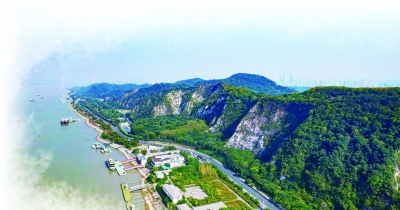 This year’s Nanma Muyan scenery belt track. Nanjing Daily/Purple Mountain News reporter Feng Wei Sun Zhongyuan photo
This year’s Nanma Muyan scenery belt track. Nanjing Daily/Purple Mountain News reporter Feng Wei Sun Zhongyuan photo








